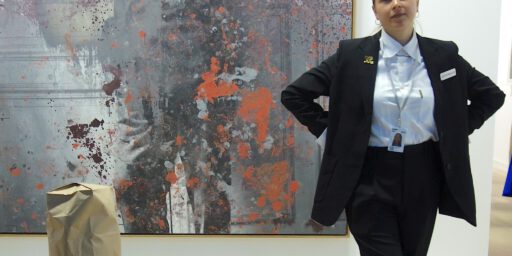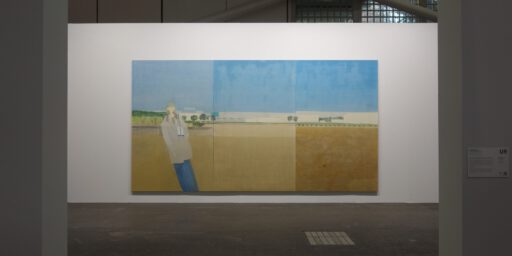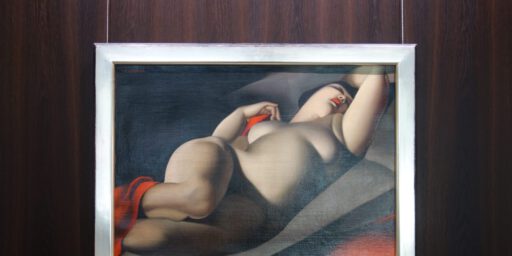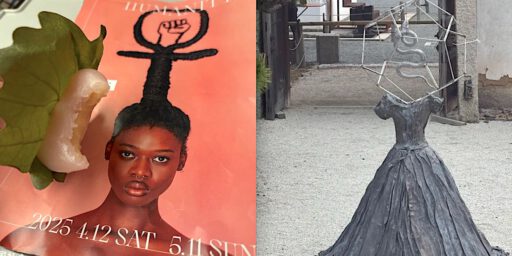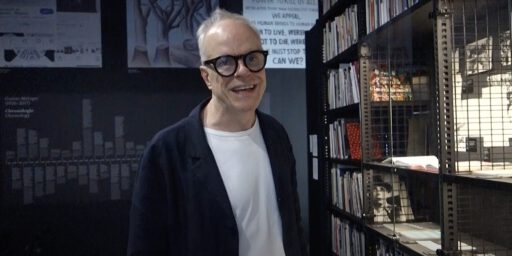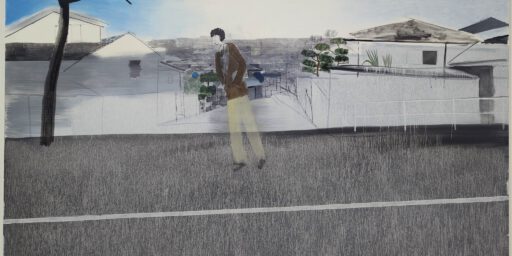バーゼル市立美術館の学芸員フィアスコ:「ブラック・マドンナ」 (キリスト教) vs. 「ブラック・天皇」 (神道) Curatorial Fiasco at the Kunstmuseum Basel: “Black Madonna” (Christianity) vs. “Black Tenno” (Shintoism)
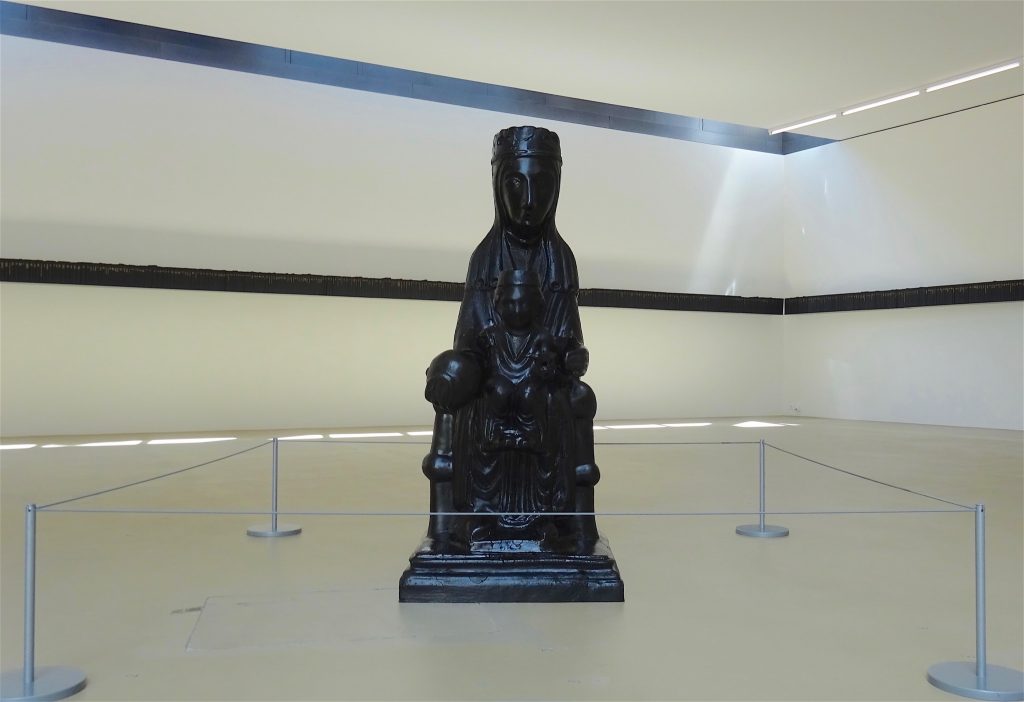
In his exhibition at the Kunstmuseum Basel, which will be spread out across two of the museum’s venues, Gates will explore the cult of the Black Madonna, examining both its significance in the history of religion and its aesthetic and metaphorical tenor.
(provocative) official statement by the Kunstmuseum Basel, see:
https://kunstmuseumbasel.ch/en/exhibitions/2018/gates
Please cross-check these postings:
“Black Artist” vs. “Yellow Artist” in the context of “Henry Taylor @ Blum & Poe Tokyo” (2018/5/12)
https://art-culture.world/articles/black-artist-vs-yellow-artist-in-the-context-of-henry-taylor-blum-poe-tokyo/
Mark Bradford + Kerry James Marshall: ‘Black Art’ for American Art Flippers (2018/5/14)
https://art-culture.world/articles/mark-bradford-kerry-james-marshall-black-art-for-american-art-flippers/
バーゼル市立美術館の学芸員フィアスコ:「ブラック・マドンナ」(キリスト教) vs. 「ブラック・天皇」(神道) (2018/7/1)
Curatorial Fiasco at the Kunstmuseum Basel: “Black Madonna” (Christianity) vs. “Black Tenno” (Shintoism)
https://art-culture.world/articles/curatorial-fiasco-at-the-kunstmuseum-basel-theaters-gates-black-madonna/
1971.
“Imagine” Yoko Ono and John Lennon.
1972.
Strong pro-feminist statement by Yoko Ono and John Lennon with “Woman Is the Nigger of the World”
John Lennon & Yoko Ono — Woman Is the Nigger of the World — Dick Cavett .mov
in case of censorship: www.youtube.com/watch?v=Uk_tcu1Xq3I
2018.
And we are still arguing about “color” as boundary. In a progressing, quickly developing global mobility context, fear of losing its own cultural identity make people act in discriminative ways.
The still running, misleading curatorial practice at Kunstmuseum Basel “Black Madonna” questions identity politics, because Gates forces us to discuss about the termini “Black Art”,“black artist”, “Black Americans”, “artists who are black”, “American artists of African descent who are American artists, and they create American art”, “black archive”.
“But for Mr Gates, the Black Madonna is first and foremost a black American phenomenon. The notion of a black mother of God has been powerfully resonant throughout American history”
https://www.economist.com/prospero/2018/06/25/theaster-gates-and-the-art-of-the-black-madonna
In the 80’s I travelled as a back-packer around Latin America for one year.
No one in these catholic countries like Brazil, Colombia, Venezuela, Ecuador would use the terminus “Black Art”. The terminology “American art” or “American history” used by U.S. citizens, even in this “Kunstmuseum Basel” case, is more than wrong, because it manifests, still today, an attitude of discrimination, segregation with a notion of supremacy.
One reason why this exhibition in the name of “American art” sucks.
One other reason to feel sensitively disturbed is the subtle layer of out-dated, old-fashioned anti-US-ism and an anti-catholic strategy in the curatorial practice, even if the artist had been given “carte blanche”. Europeans do love the USA with Obama.
Further on, too many repetitive images, unnecessarily blown up photographs, boring zombie paintings, pretentious educational pseudo-science, wrong emancipatory context regarding human beings, women, men or non-binary persons being mislead to explore the potential of new, imaginative, liberating connections.
In some body of works, a blurry “black fascism” can be recognized, which closes the stage for an open dialogue, because rational discussion will be restricted by political activism or a political agenda. Therefore I call this exhibition a curatorial fiasco.
Compare my opinion with the quote by Thomas Chatterton Williams, in the New York Times, June 27, 2018.
Adrian Piper’s Show at MoMA is the Largest Ever for a Living Artist. Why Hasn’t She Seen It?
https://www.nytimes.com/2018/06/27/magazine/adrian-pipers-self-imposed-exile-from-america-and-from-race-itself.html
“Piper believes that anyone who peers deep enough would find no such thing as a stable racial identity. When I asked her about it, she rejected the notion that there is even something so straightforward as a “black sensibility.” “The concept of being black was not one that was in use in my home,” she said with a laugh. “It’s not as though we said, ‘Here I am, a black person cooking an egg!’ ” But the civil rights movement made the question pressing. “Which side of the line are you on? That’s where identity politics begins,” she said, suggesting a subtle irony that black thinkers from Richard Wright to Fred Hampton would recognize as true: The fight for liberation from oppression can reify the very same racial categories that are bogus to begin with. This is one of the more perverse traps members of historically oppressed groups can find themselves hemmed up in.”
Personally, my highlight of “Black Madonna” was a hidden jewel, intelligently positioned as the reception desk at the entrance of the Kunstmuseum Basel Gegenwart: “Arrival desk with red light John H. Johnson’s desk”.
Unfortunately, the kind person at this desk couldn’t describe me the contextual background of this work; further on, the LP player didn’t function in the exhibition area. These problems had been resolved later. German and French explanatory pamphlets, incomplete regarding all the works exhibited, were missing in both museum venues.
Now, let’s change the color, especially from the viewpoint of Japan, where I (= African-European multi-ethnic background) consider myself an artist from Japan.
Should I mention, that my educational background could be defined as the so-called “Christlich-jüdische Leitkultur” in Deutschland?
Italian and German family relatives follow catholic and protestant beliefs. Because of my Japanese wife, I have to pray in Buddhist temples and Japanese Emperor “Tenno”-related Shinto shrines.
Hey, it’s all fucked up, but I enjoy it and I am living a happy life as a human being.
In the “Black Madonna” context, I would suggest Gates in trying to exhibit a sculpture of the Japanese Emperor, by most Japanese regarded as the highest authority of the Shinto religion, all in black and tarred like the “Black Madonna”. By changing one word, “Gates will explore the cult of the Black Tenno, examining both its significance in the history of religion and its aesthetic and metaphorical tenor”, one can guess the worst reactions imaginable in Japan and the neighboring Asian countries.
How would you define “Yellow Art”, “yellow artist”, “Yellow American”, “artists who are yellow”, “American artists of Asian descent who are American artists, and they create American art”, “yellow archive”?
You see, it’s awful, really fucked up, too. And we could rotate, exchange the “colors” in every country of the world.
Hesitating to distinguish between mixed ‘races’? (‘race’ = out-dated word but still “popular” in the U.S.)
Let’s have a discourse in Japan or in any Asian country about identity politics by adding the layers “gender identity”, “feminism”, “religion”, “spiritual seekers”, “minority culture” and “multiple country origins”. It will end up in discriminative, segregative statements, even in the contexts of scientific terminology and the so-called “Human Enlightenment”. Or should I better use the term “Yellow Enlightenment” as a juxtaposition to Gates’s “Black Enlightenment”?
Unfortunately, in other parts of the world, especially in rural areas, abstractly speaking, the cultural identity situation is getting worse.
Keeping the above mentioned, problematic ambivalence about being “designed” as black artist or artists who are black in mind, I therefore hesitate to see the works by Gates as “Black Art”.
If Theater Gates calls himself a “Black Artist”, I, Mario A, will call myself a “Yellow Artist”. His creative practice would be “Black Art”, mine “Yellow Art”.
Let’s have a laugh:
Black Panther Artist vs. Yellow Jaguar Artist.
Why should we rewrite (Western) art history?
For example, 100 years ago “White Painting” in the “Western Art Canon” had been already re-contextualized, emancipated by Gabriele Münter, Oskar Kokoschka, Otto Müller, Ernst Ludwig Kirchner, Max Pechstein, Emil Nolde and many more… The faces and bodies are painted in green, red, yellow, black, etc…
Picasso was partly of Arabic origin, with North African roots. Picasso is NOT a WHITE painter.
Tokyo-Basel, 2018/7/1
Mario A
THEASTER GATES
“BLACK MADONNA”
Kunstmuseum Basel, Neubau + Gegenwart
2018/6/9 – 10/21
Kuratoren der Ausstellung: Josef Helfenstein, Søren Grammel
Assistenzkuratorinnen: Eva Falge, Olga Osadtschy
Konzept Programme: Theaster Gates, Daniel Kurjakovic ́
Wissenschaftliche Assistenz: Tuula Rasmussen
https://kunstmuseumbasel.ch/en/exhibitions/2018/gates
Sculpture and the Sermon – Reflections on Speaking and Making
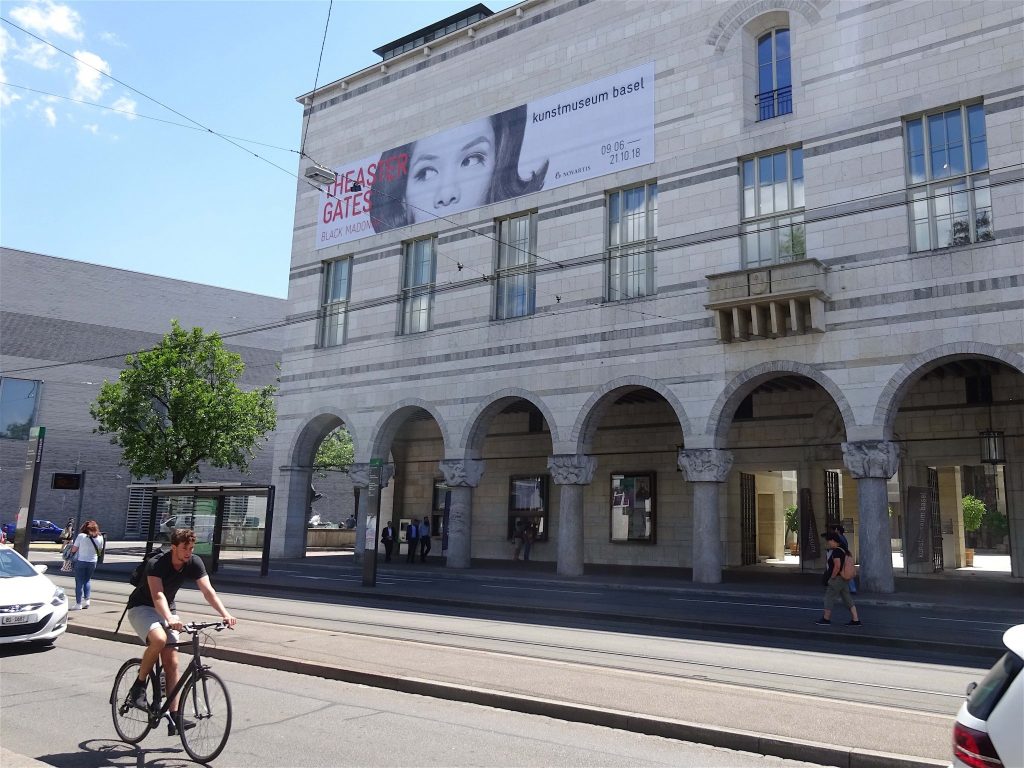
Kunstmuseum Basel, Hauptbau (Main Building), left building: Kunstmuseum Basel, Neubau (New Building)

Kunstmuseum Basel, Hauptbau
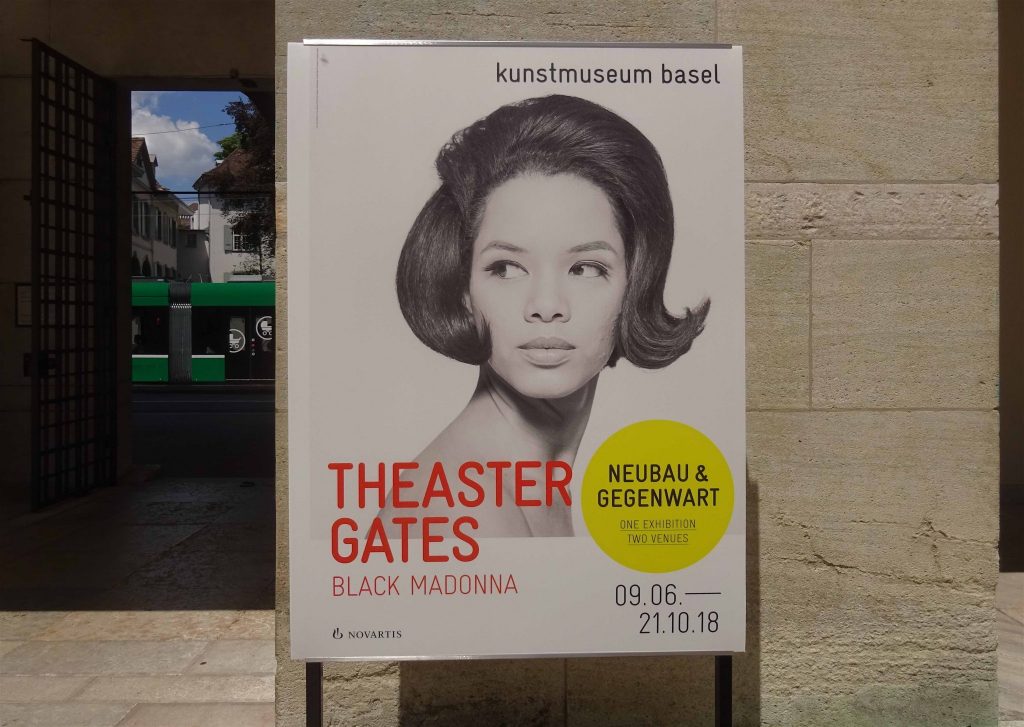

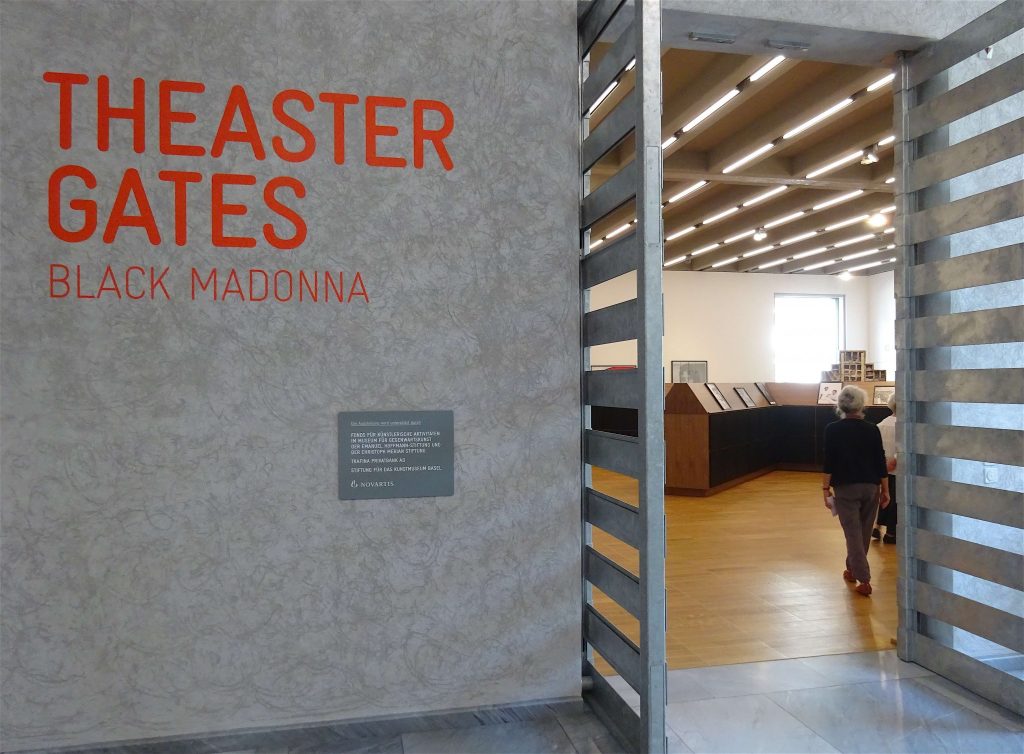

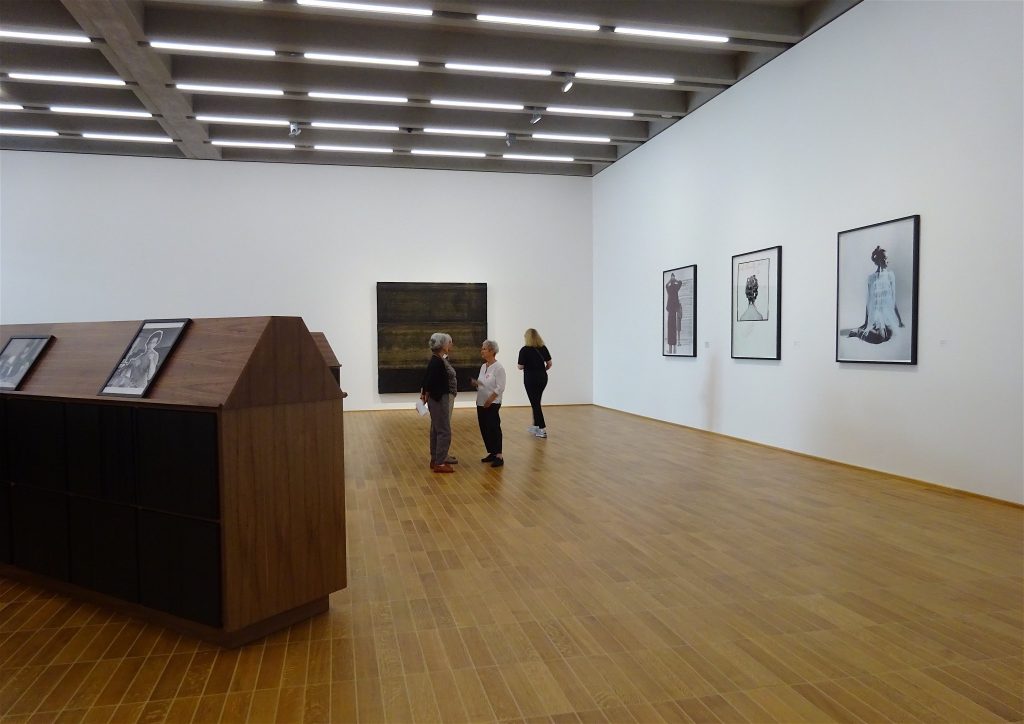
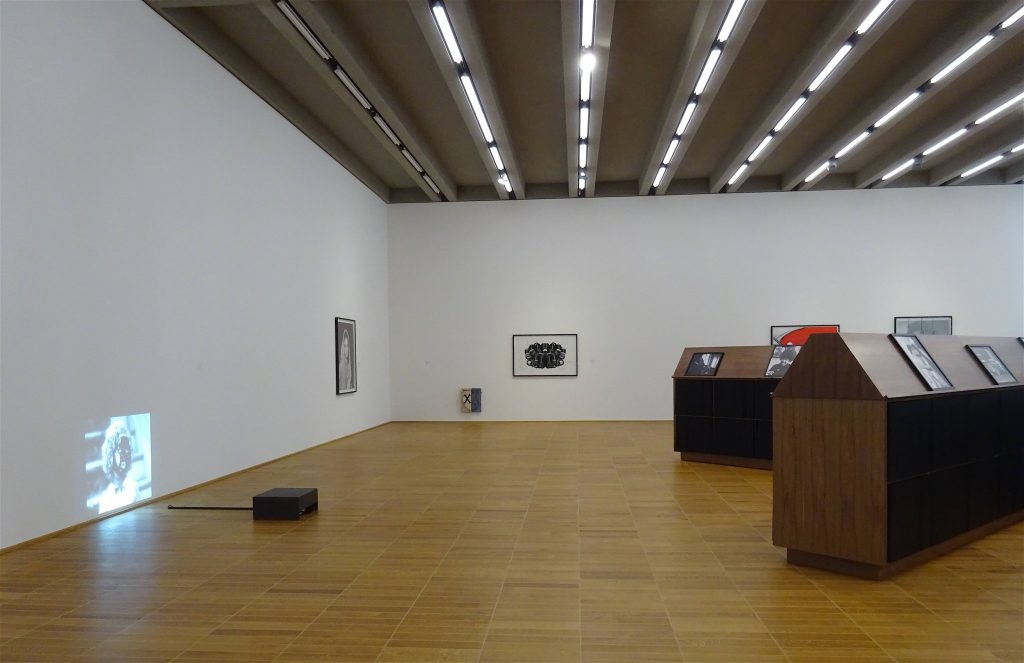

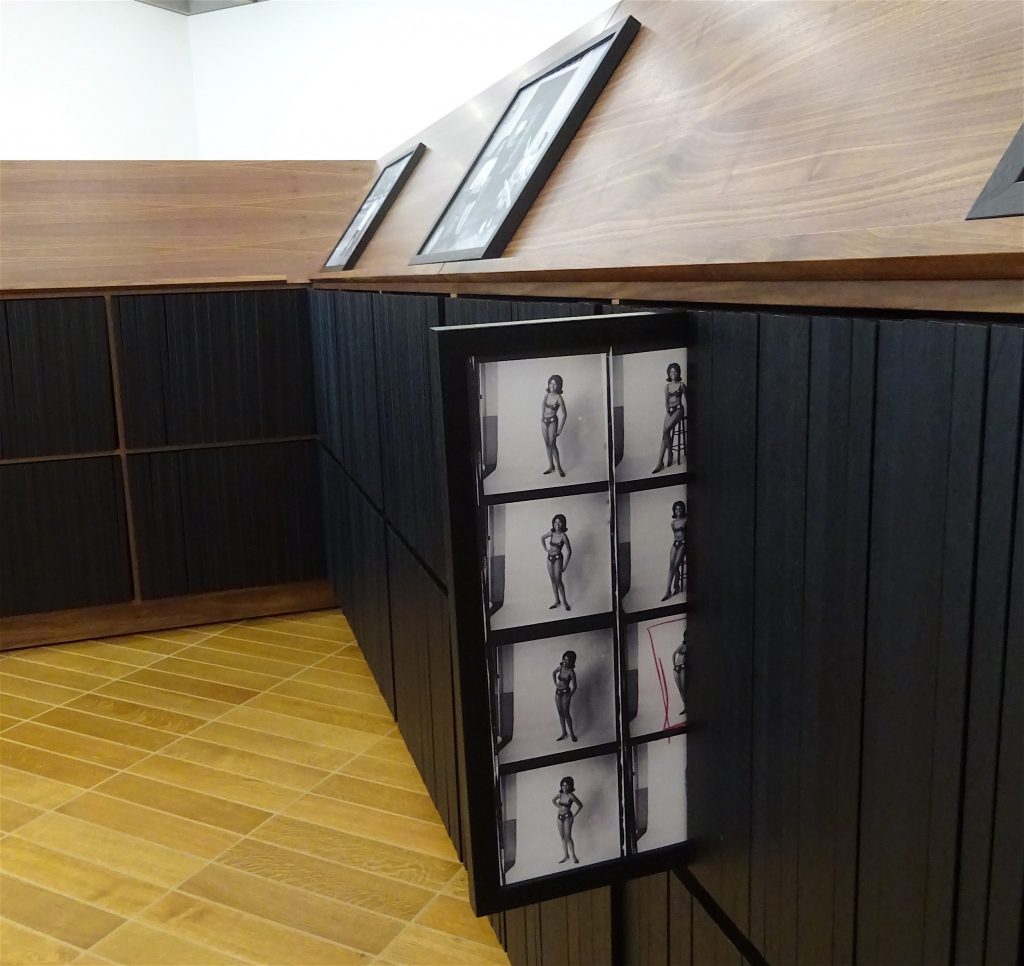
Theaster Gates “Facsimile Cabinet of Women Origin Stories” 2018, Wood construction, 2695 facsimile images of the John Johnson Archive
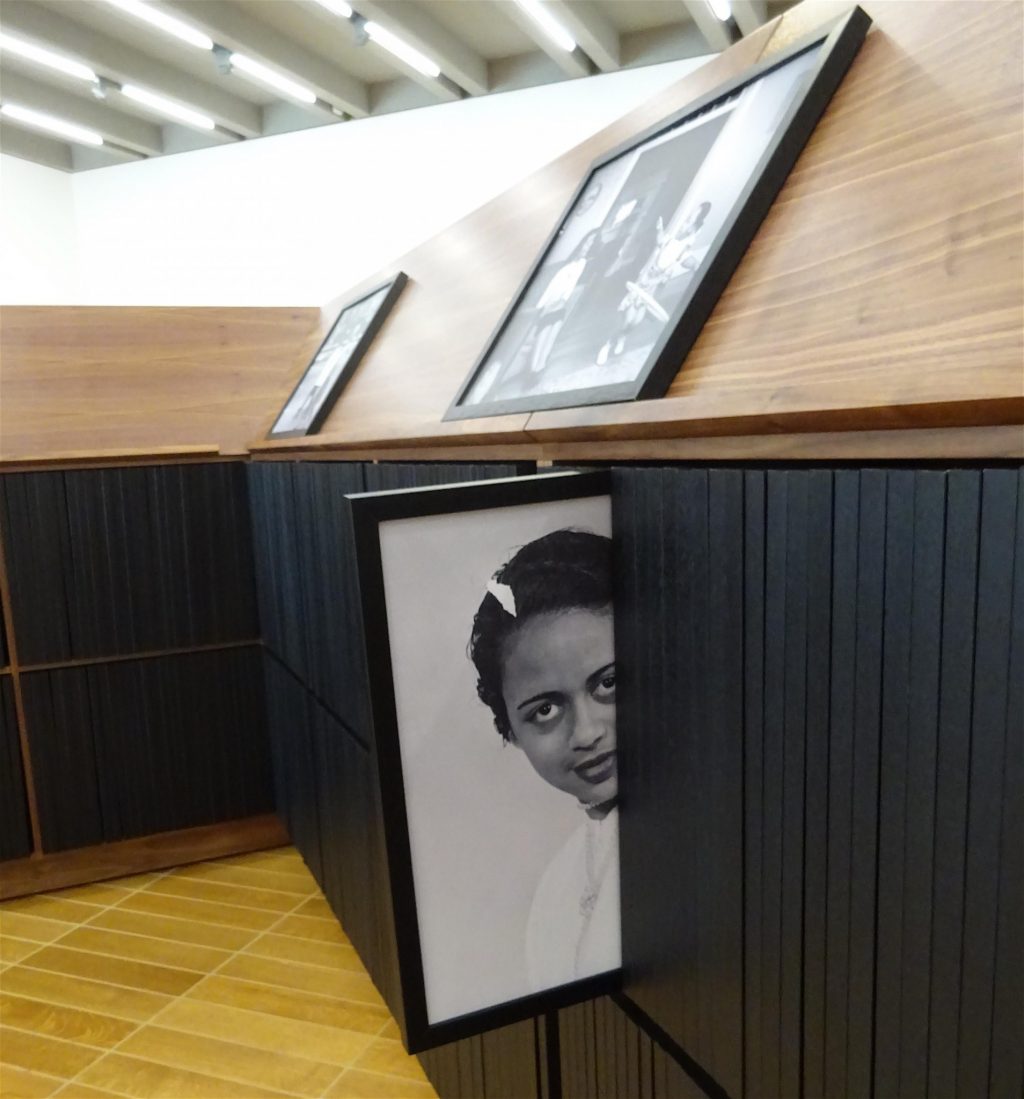

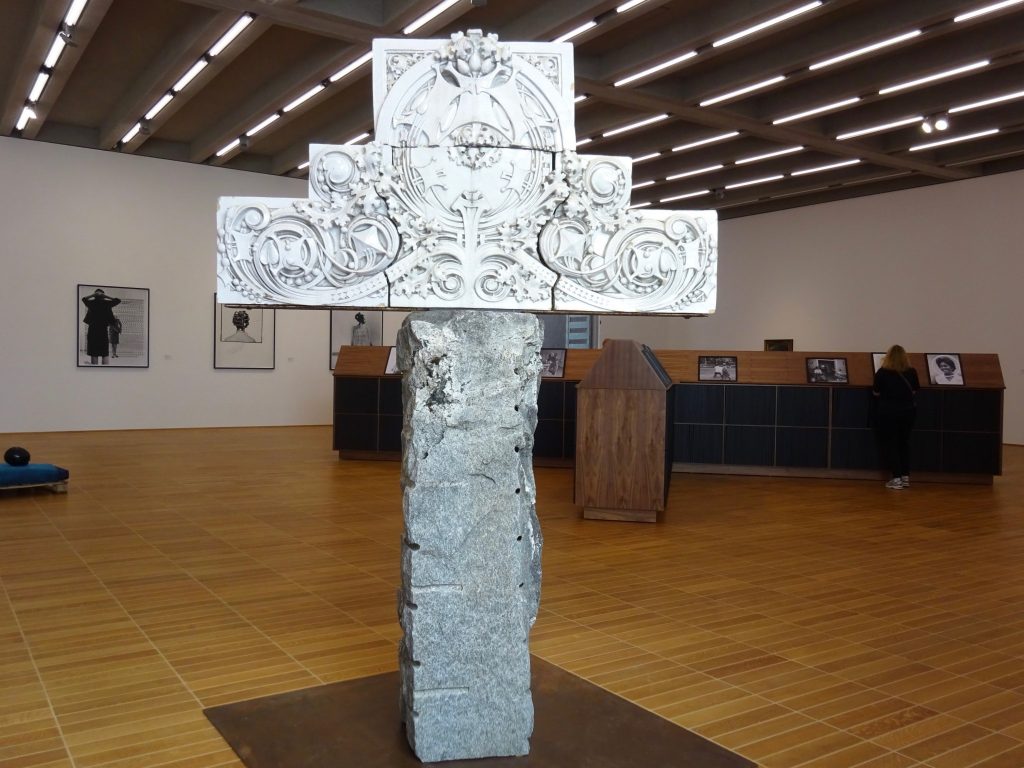
Theaster Gates “A Cross Between Finance and Pastoral Care” 2017, Terra-cotta, maggia gneis, iron plate
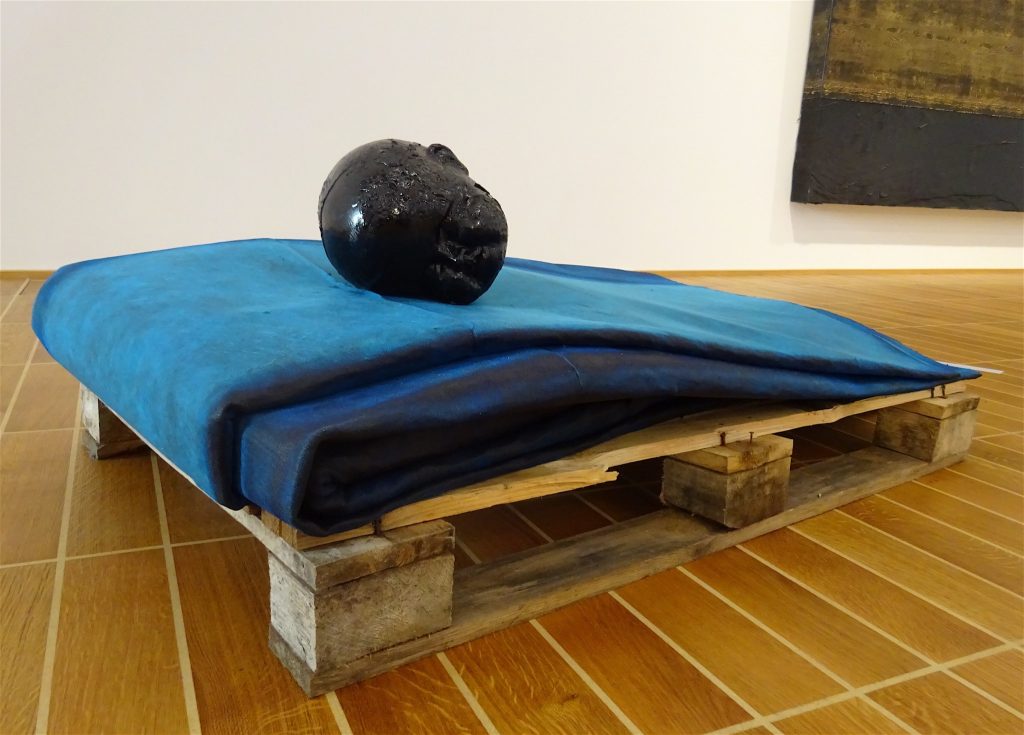
Theaster Gates “Tar Baby III with rubber components” 2016, Wood, rubber mat, tar
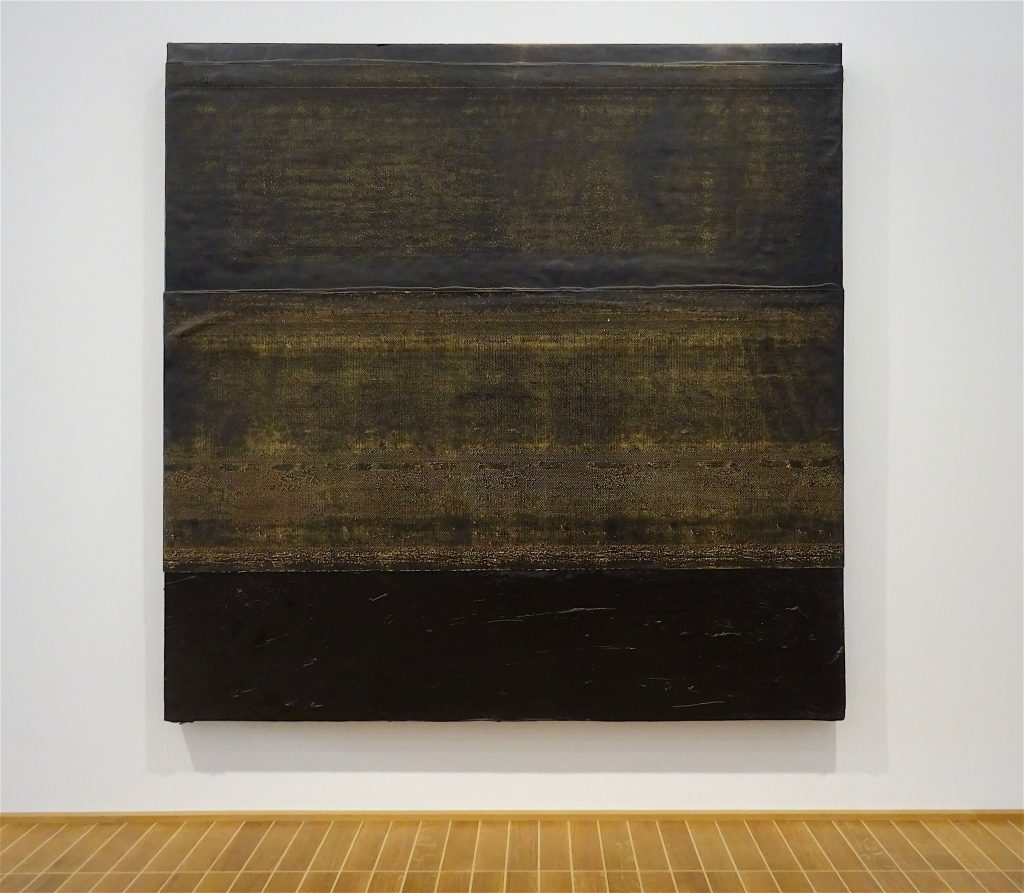
“Sky Study with Prime Real Estate on My Mind” 2013, Wood, rubber, tar
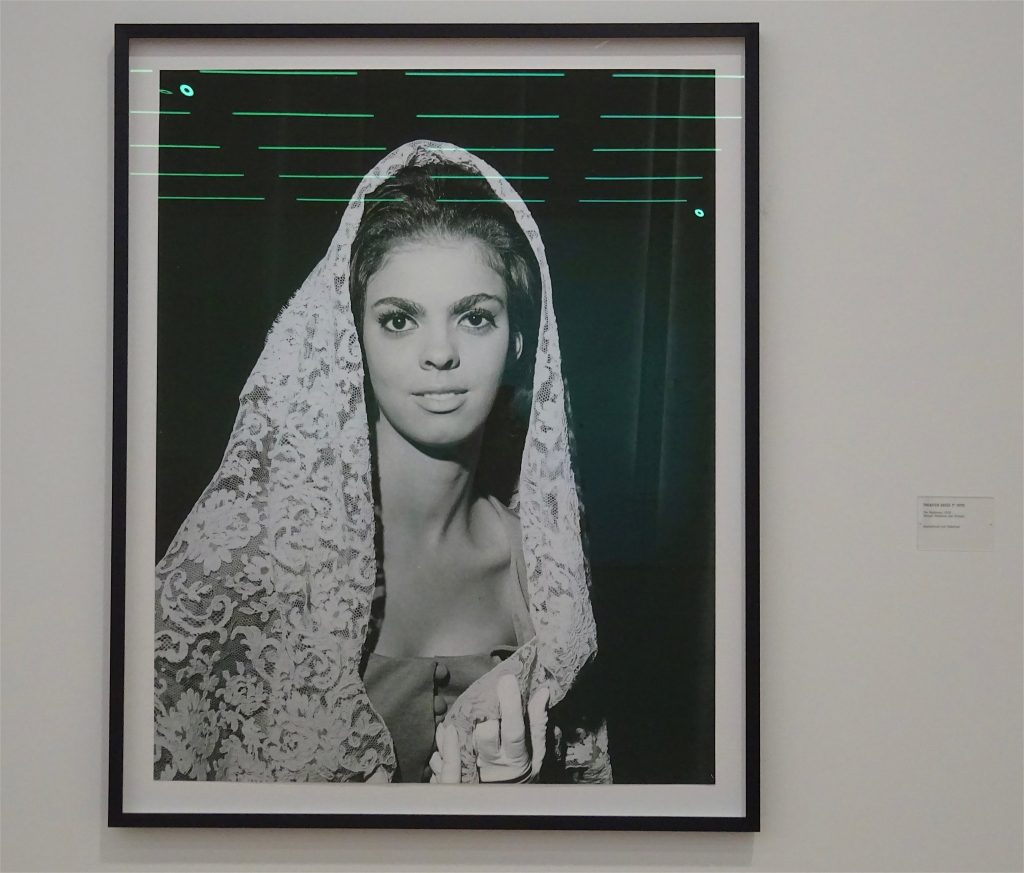
“The Madonnas” 2018, Shroud (Madonna and Shroud), Framed digital print with silkscreen

“The Madonnas” 2018, from left: (Be God in the Absence of Light), (Offset Rollers with Revlon), (White Dress with Silver Silkscreen), Framed digital prints with silkscreen
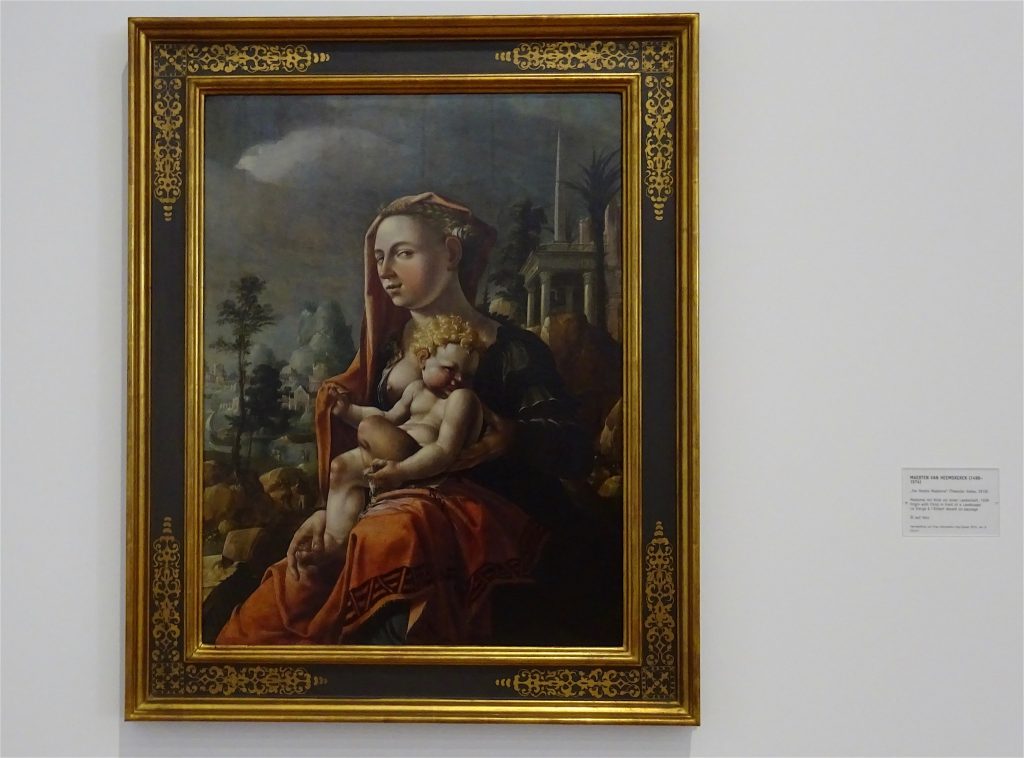
Maerten Van Heemskerck (1498 – 1574) “The Ghetto Madonna” (Theaster Gates, 2018)
Virgin with Child in front of a Landscape, 1530, Oil on Wood, 90 x 70 cm
Kunstmuseum Basel, Vermächtnis von Frau Antoinette Frey-Clavel 2014
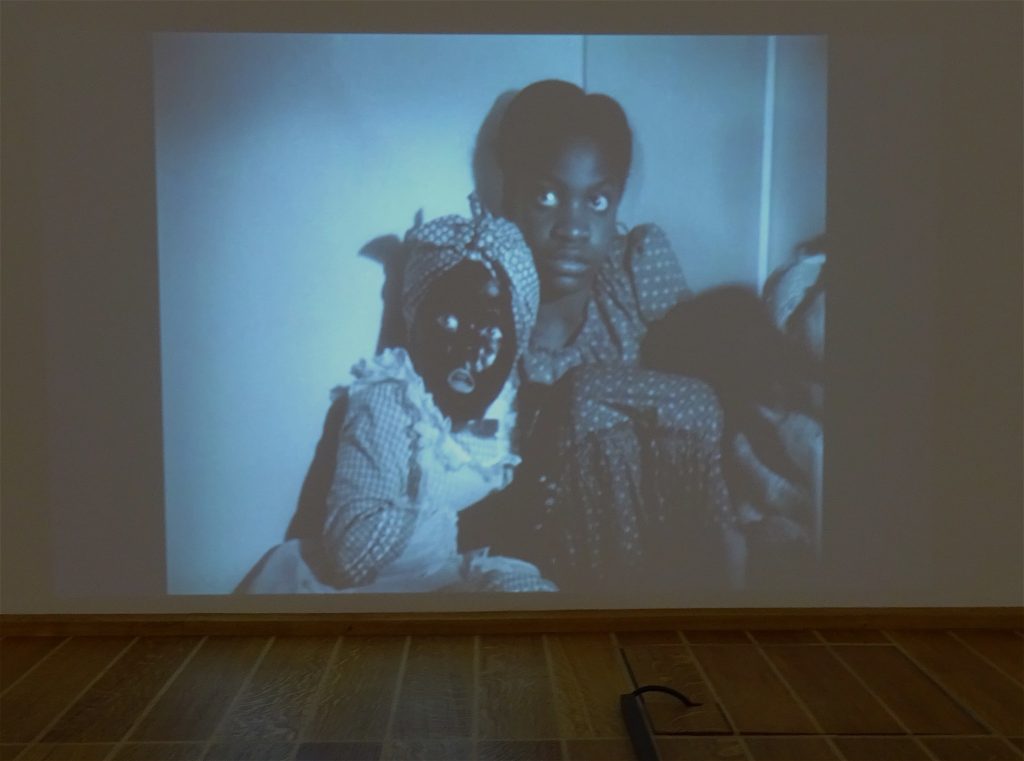
Theaster Gates “Black Temple. Shirley Temple Goes Black” 2016, video
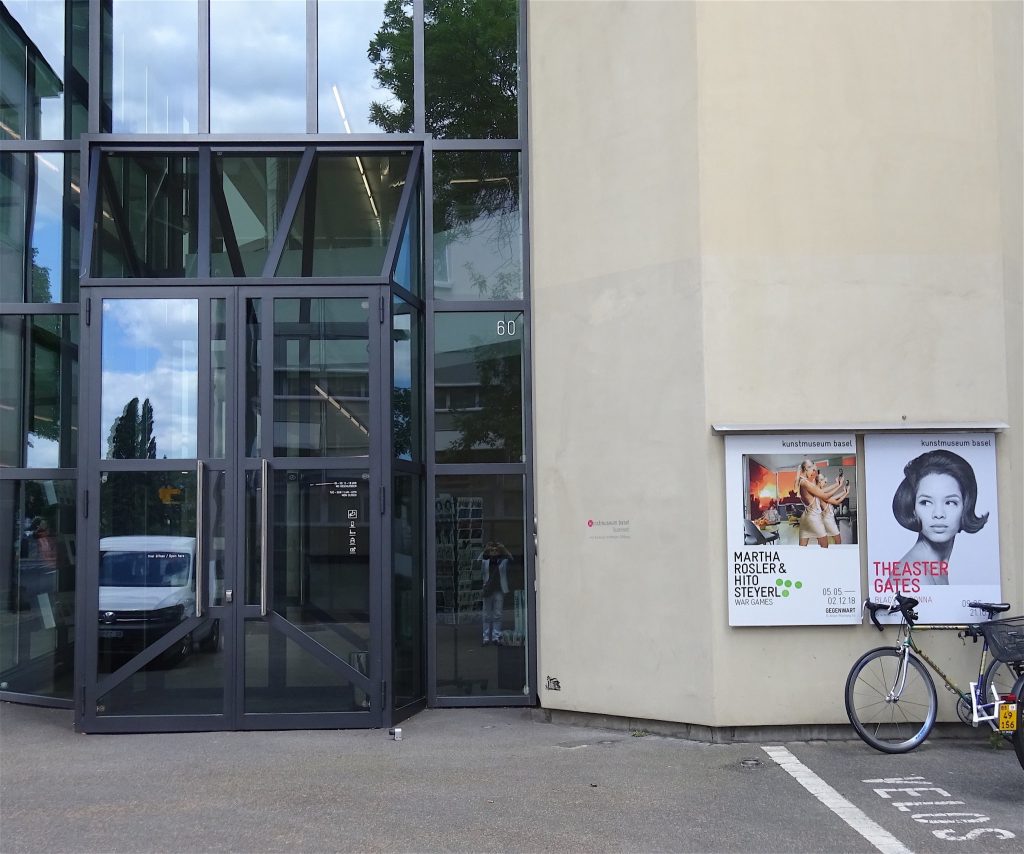
Kunstmuseum Basel, Gegenwart (Contemporary)
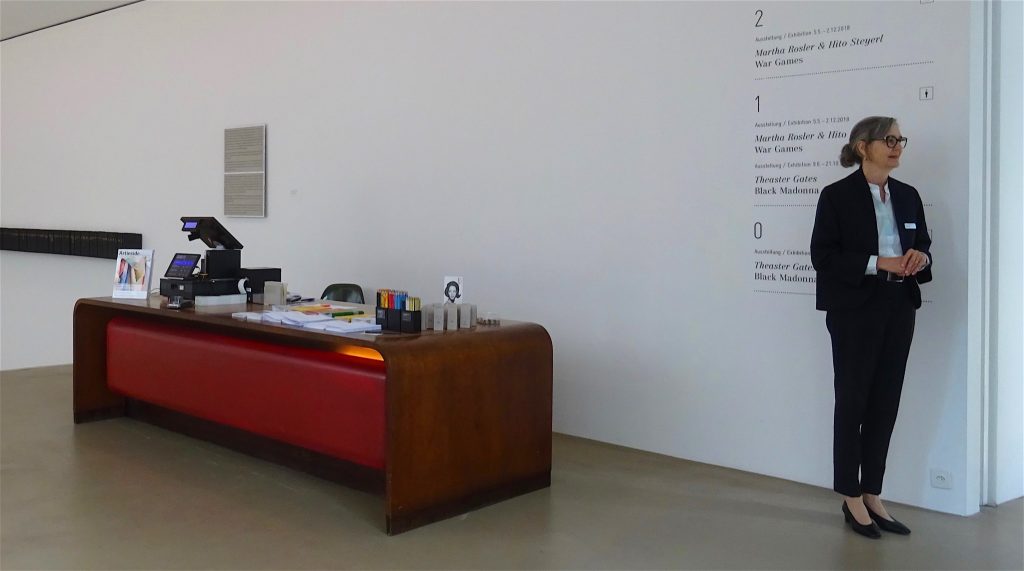

Theaster Gates “Arrival desk with red light” (John H. Johson’s desk), no date, Wood, red light


(misleading explanations:) Theaster Gates “Walking Prayer” 2018
Black Madonna, Arrival desk with red light, sound installation
Teer, neu gebundene Bücher mit geprägtem Gedicht auf den Buchrücken, sound
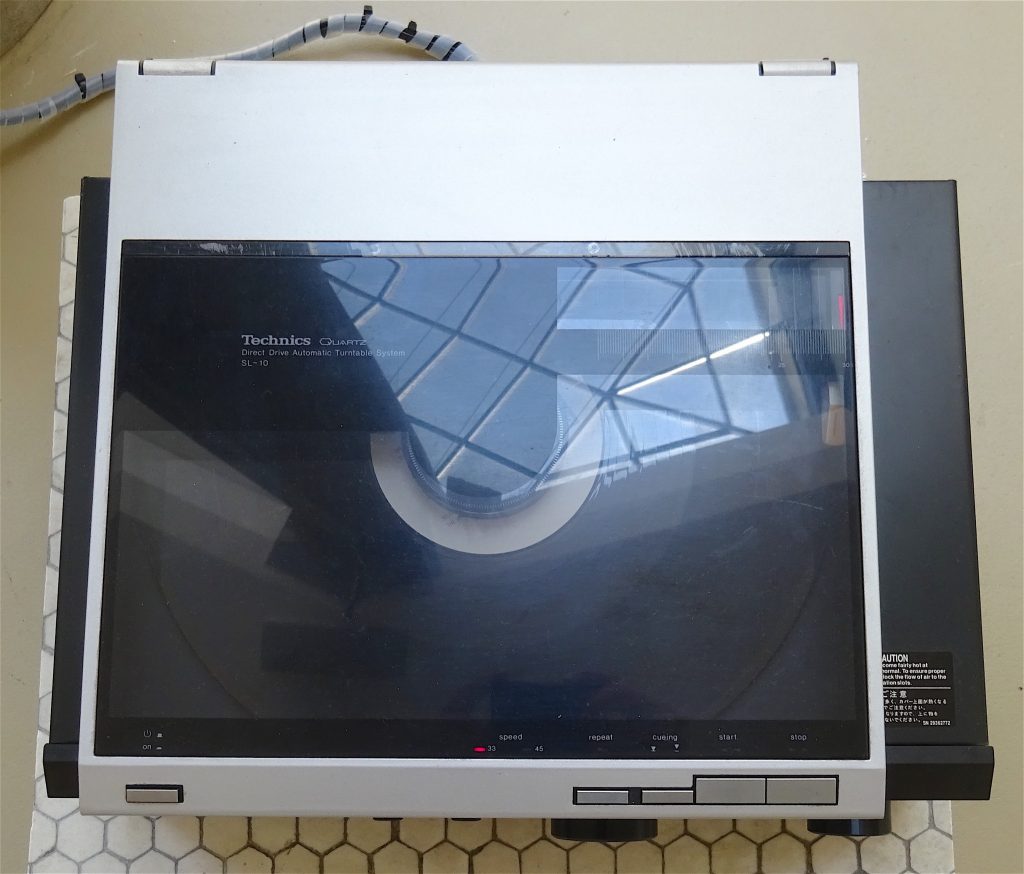
(not playing, no sound, no explanations)
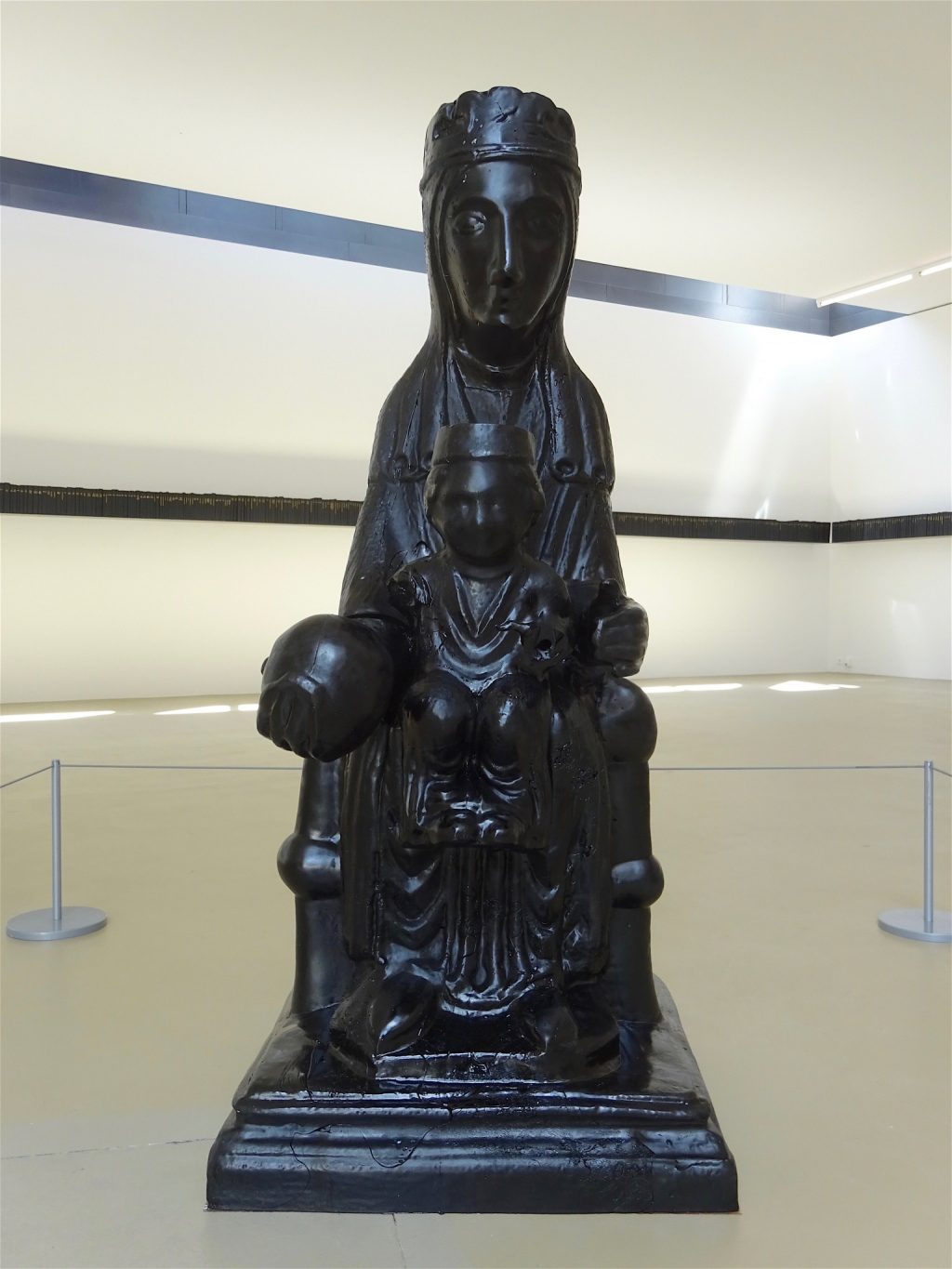
Theaster Gates “Black Madonna” 2018, Tar (the size was neither explained on the spot nor in the pamphlet)
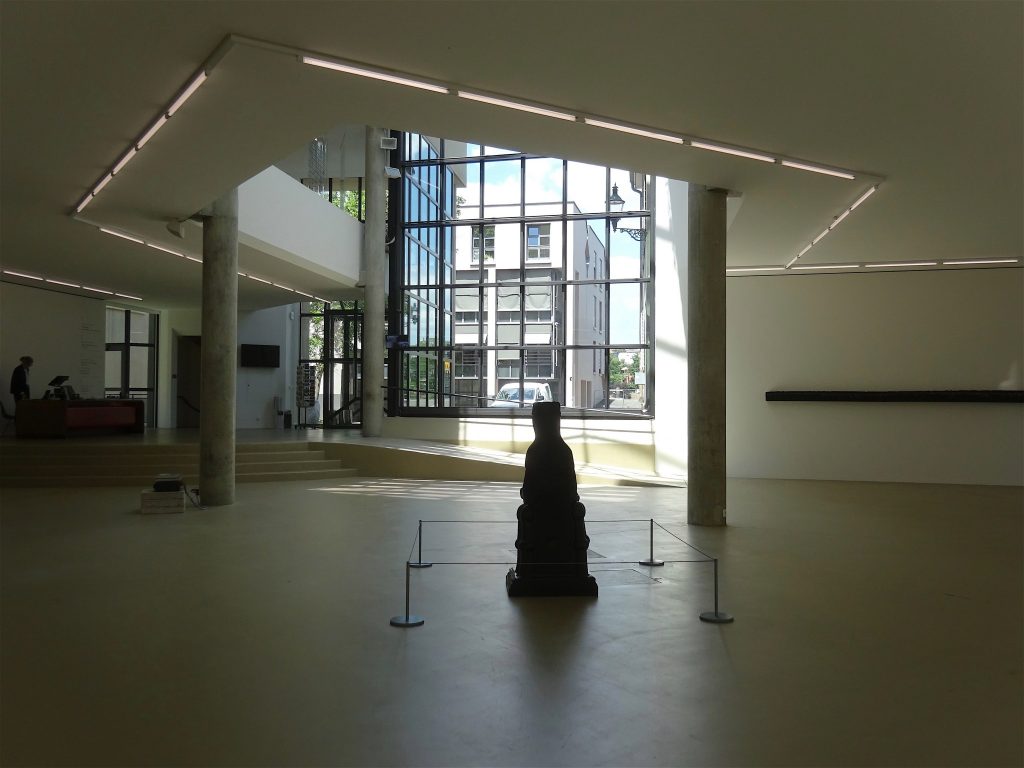
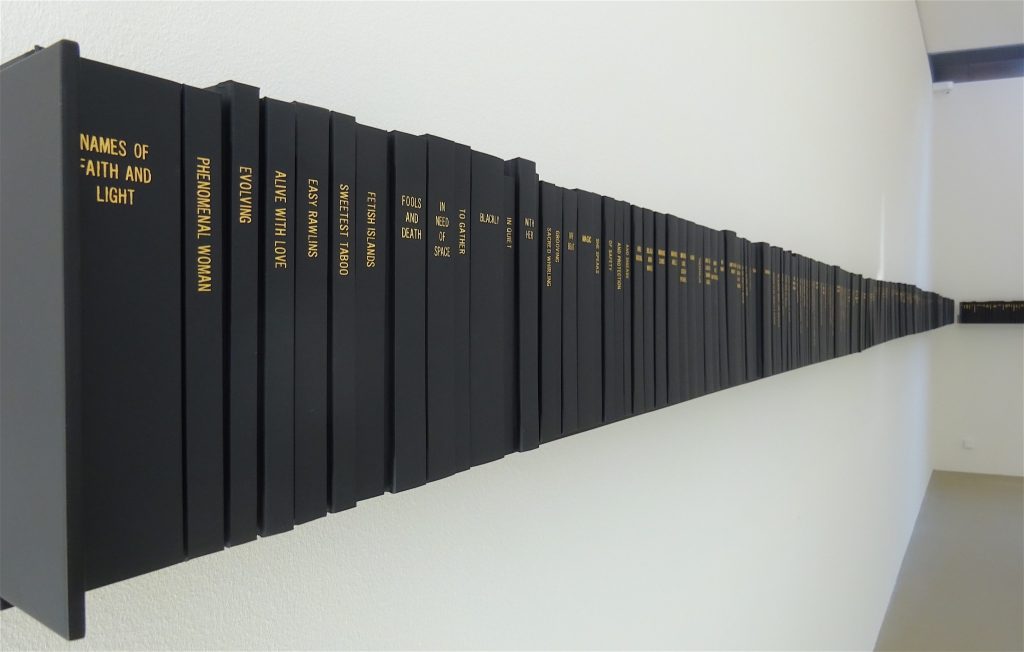
Theaster Gates “Walking Prayer” 2018, Rebound books (no size available)

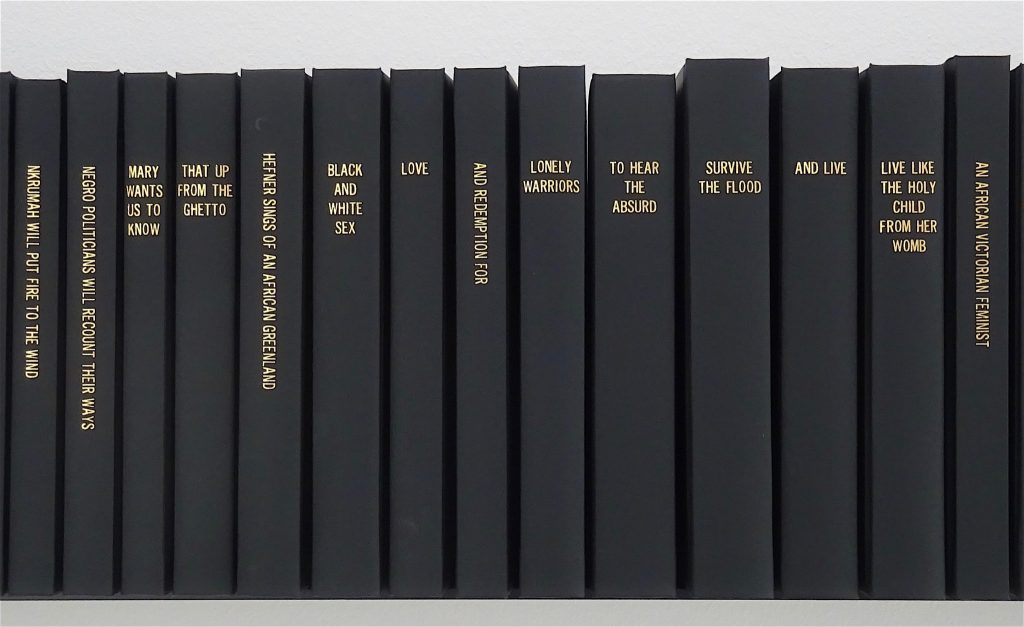

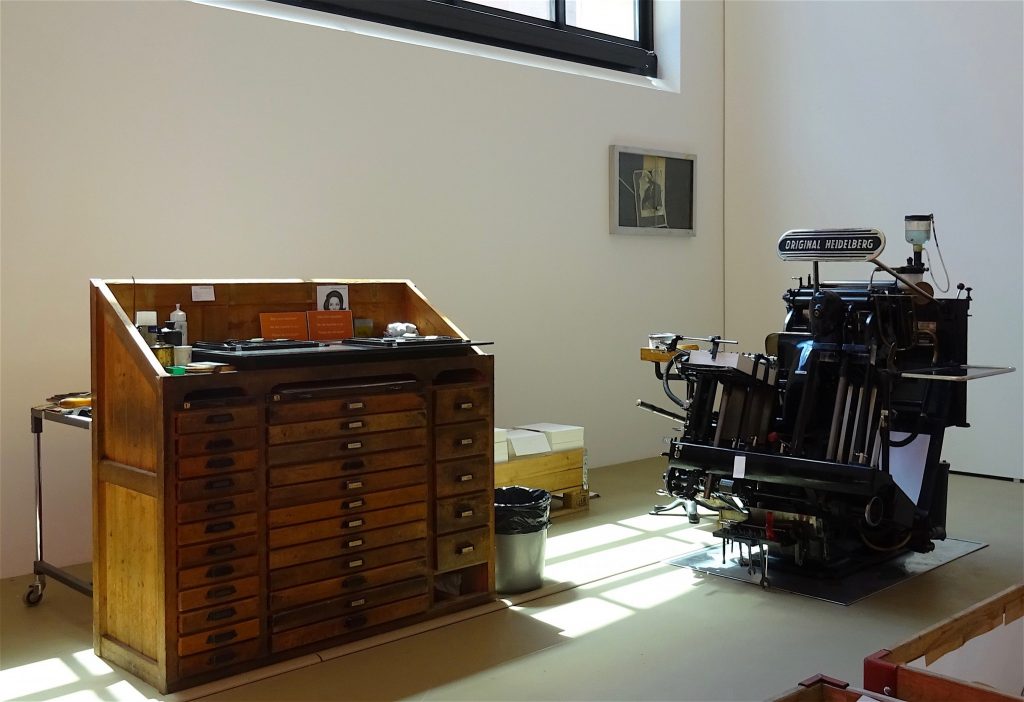
Theaster Gates “Black Madonna Press with King and Believers“ (Maimed King, Mama Mamama) 2018, Heidelberg Printing Press, neon installation, photography, metal, glas and dust, detail
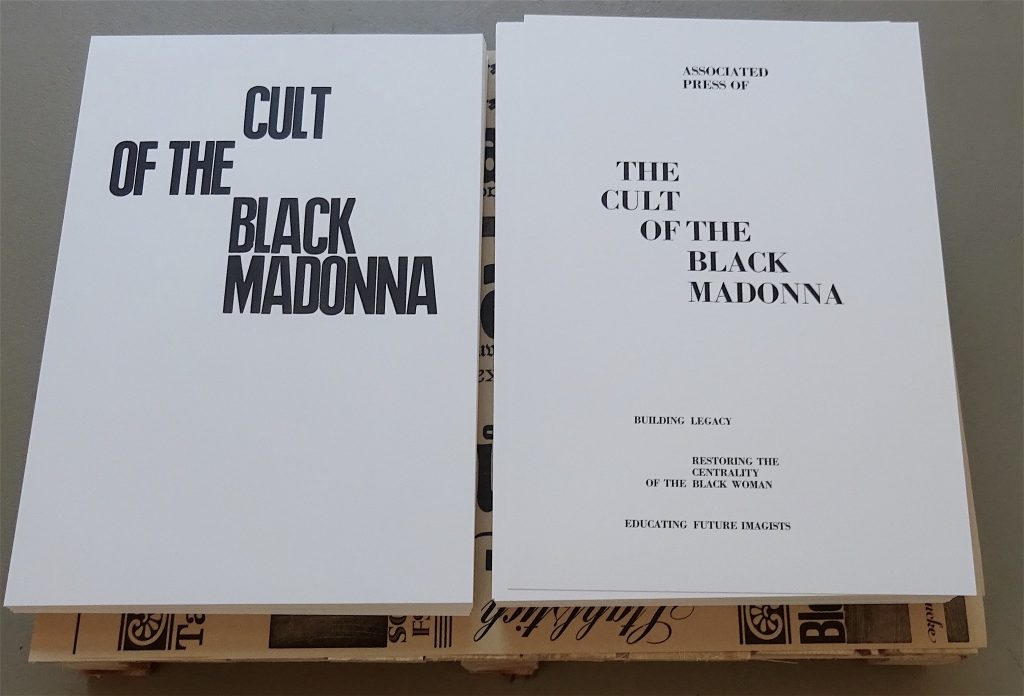
Theaster Gates “Black Madonna Press with King and Believers“ (Maimed King, Mama Mamama) 2018, Heidelberg Printing Press, neon installation, photography, metal, glas and dust, detail
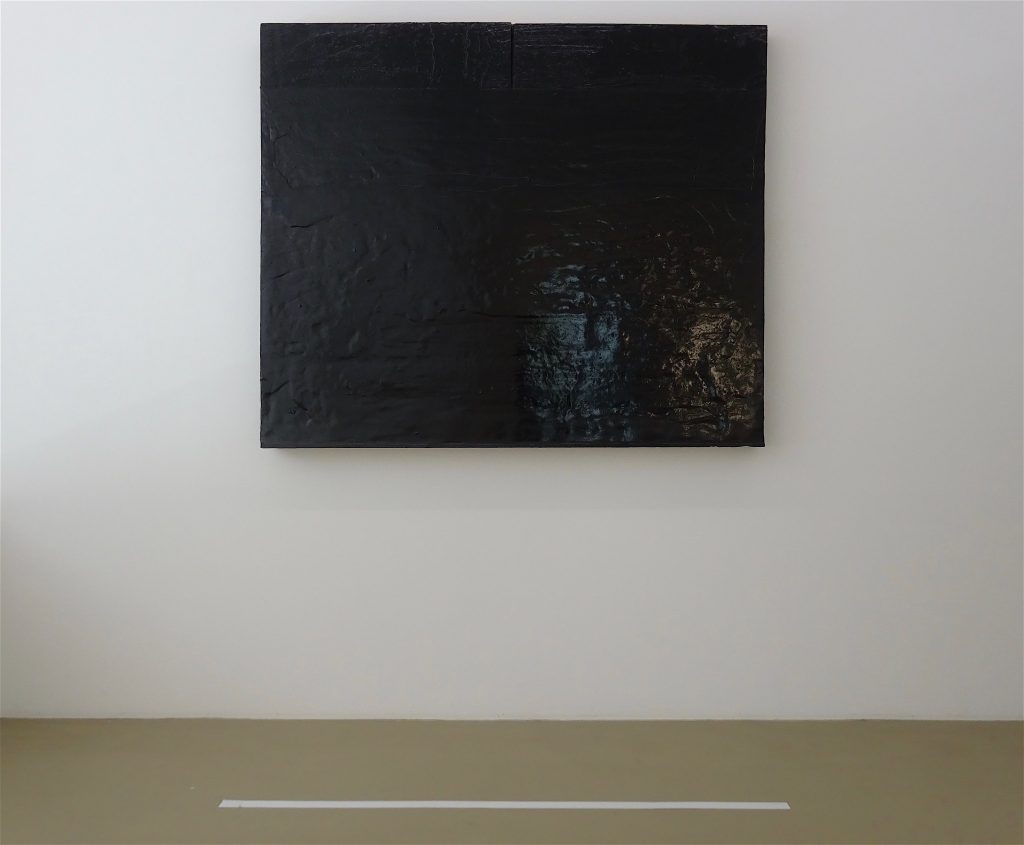
Theaster Gates “Shine Study 2” 2013, Wood, tar paper, tar, metal (no size available)

Theaster Gates “Bathroom Believer” 2018, Neon, porcelain tiles and concrete
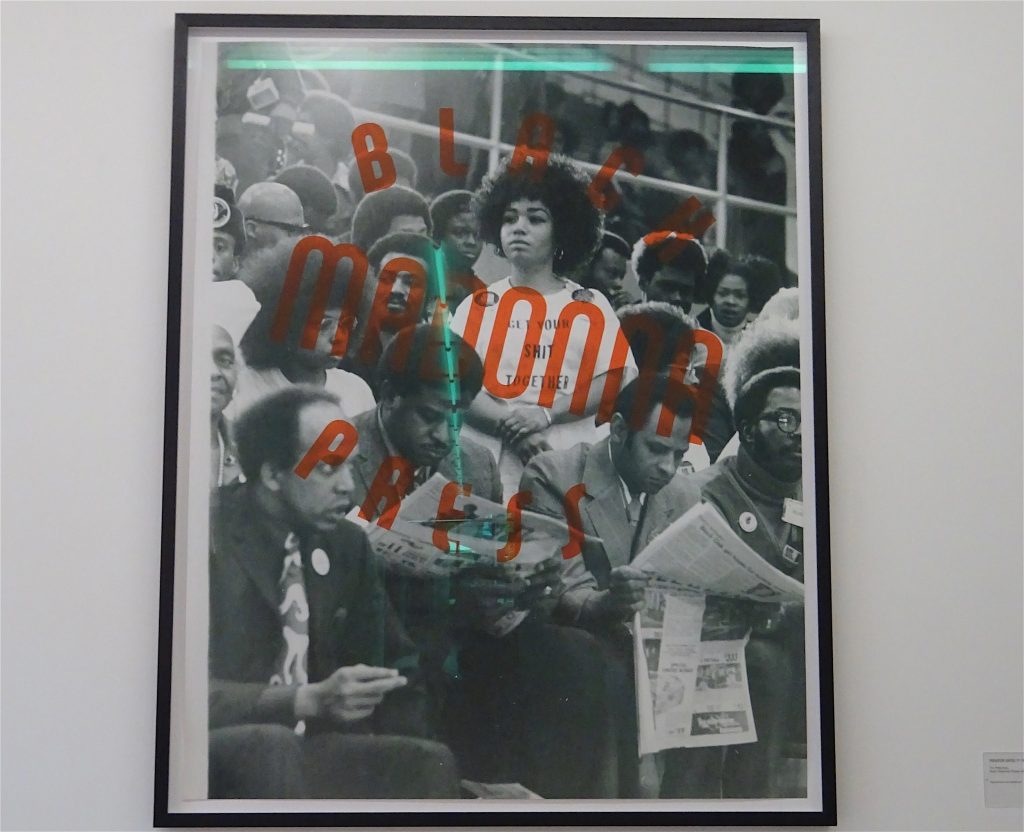
Theaster Gates “The Madonnas” (Black Madonna Stripes with Afro Model) 2018, Framed digital print with silkscreen
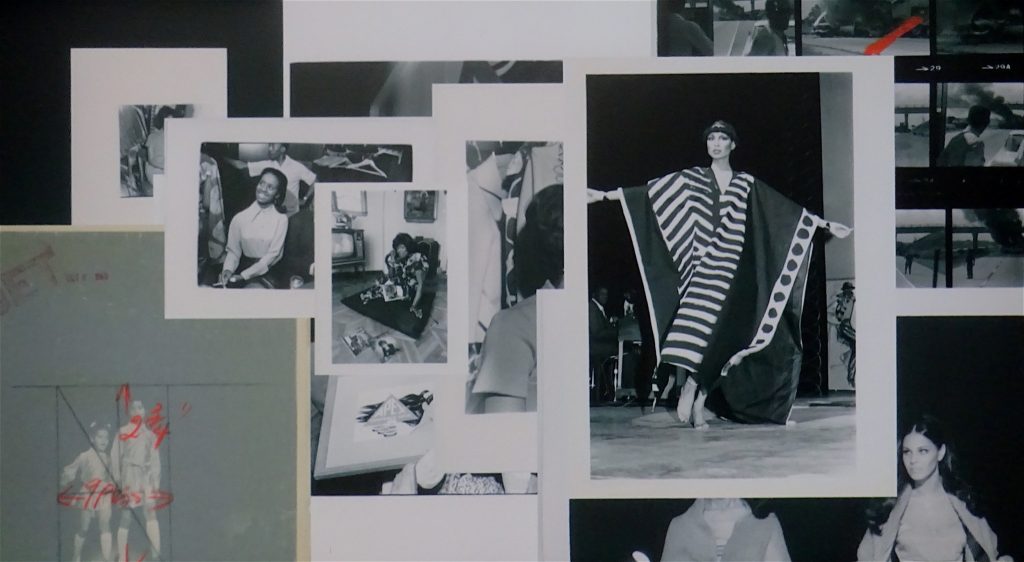
Theaster Gates “Do you hear me calling?” (Mama Mamama or What is Black Power) 2018, Video, sound, color, 42:40 min, and images by Johnson Publishing Company

Theaster Gates “Ave Maria: An Exercise in reproduction” 2018, Video, sound, color, 39:56 min, and images by Johnson Publishing Company
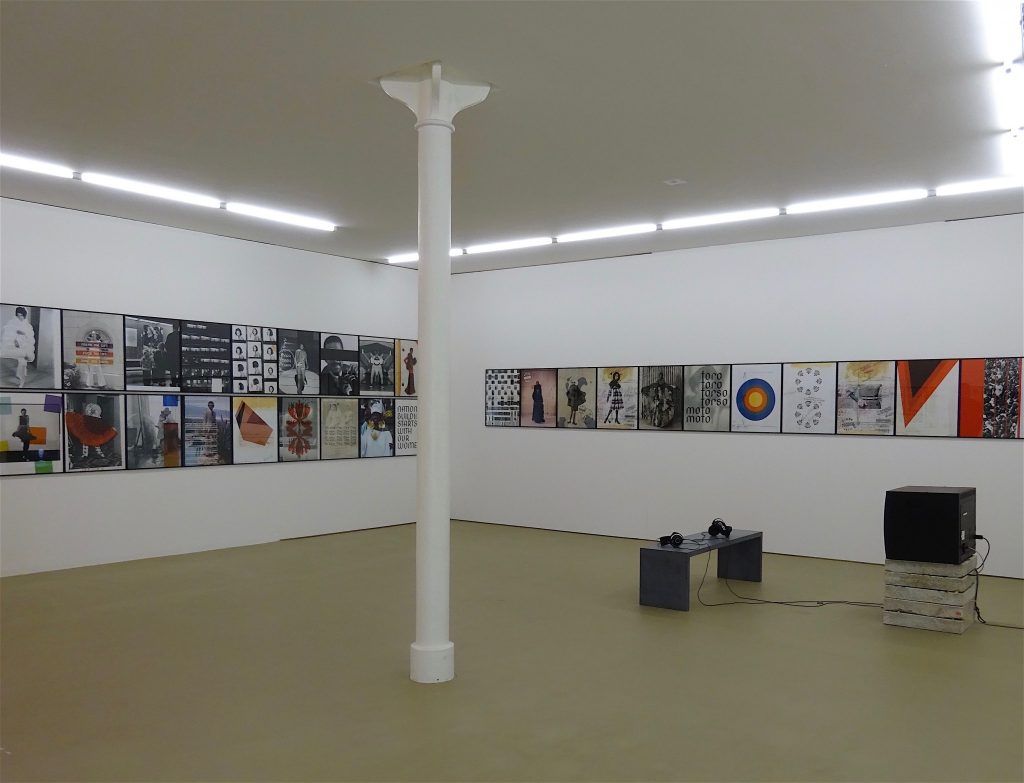
Theaster Gates “All night I looked for her, I looked for you, I looked for myself” 2018, Inkjet Prints, Johnson Publishing Company and interventions by Theaster Gates
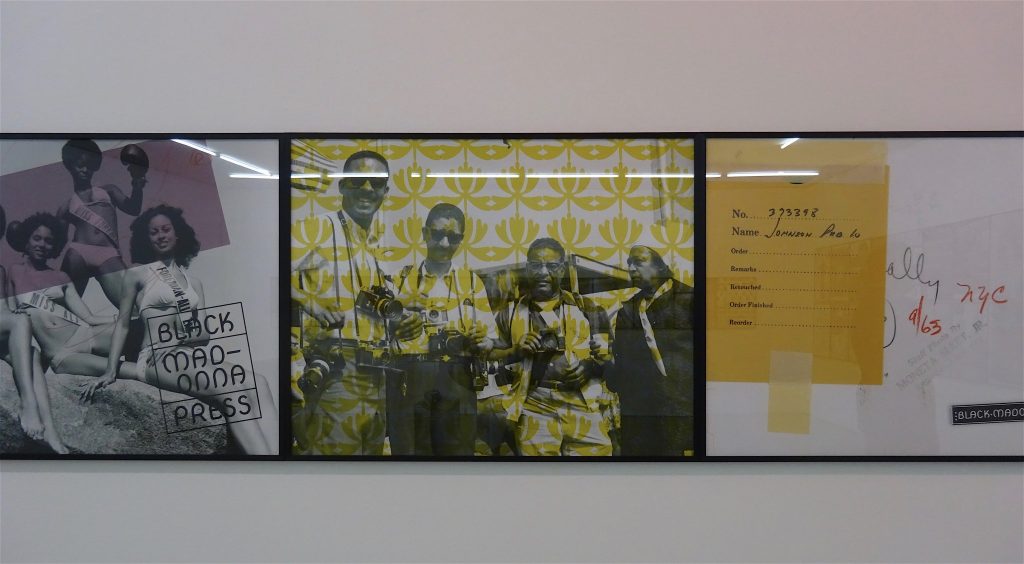

Theaster Gates “How to sell the negro” 1954, 16 mm Film, auf Video überspielt, Ton, Farbe, 21:36 Min
(no explanations available, neither on the spot nor in the pamphlet)
——————
Pics taken from my hometown’s church:
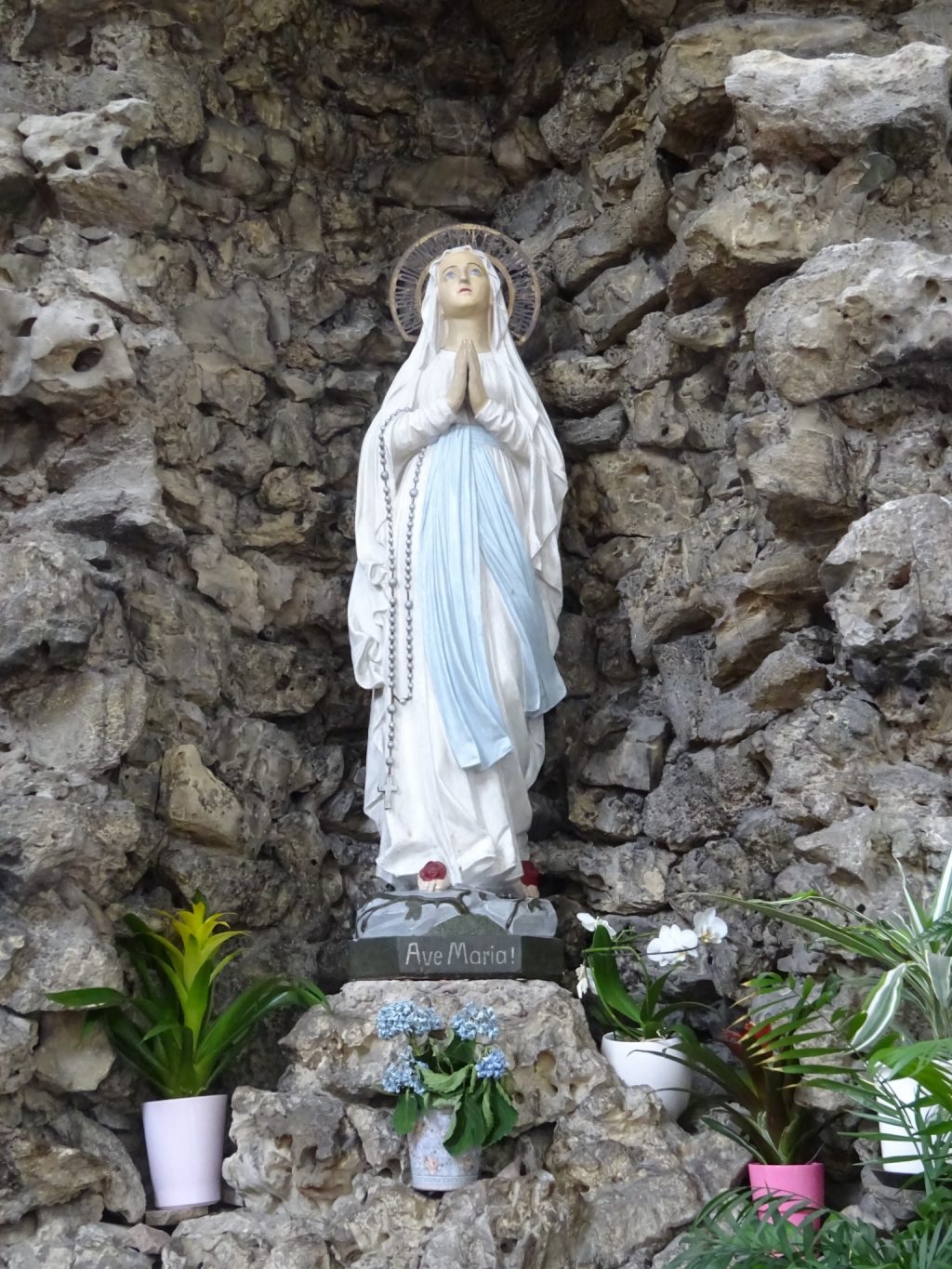
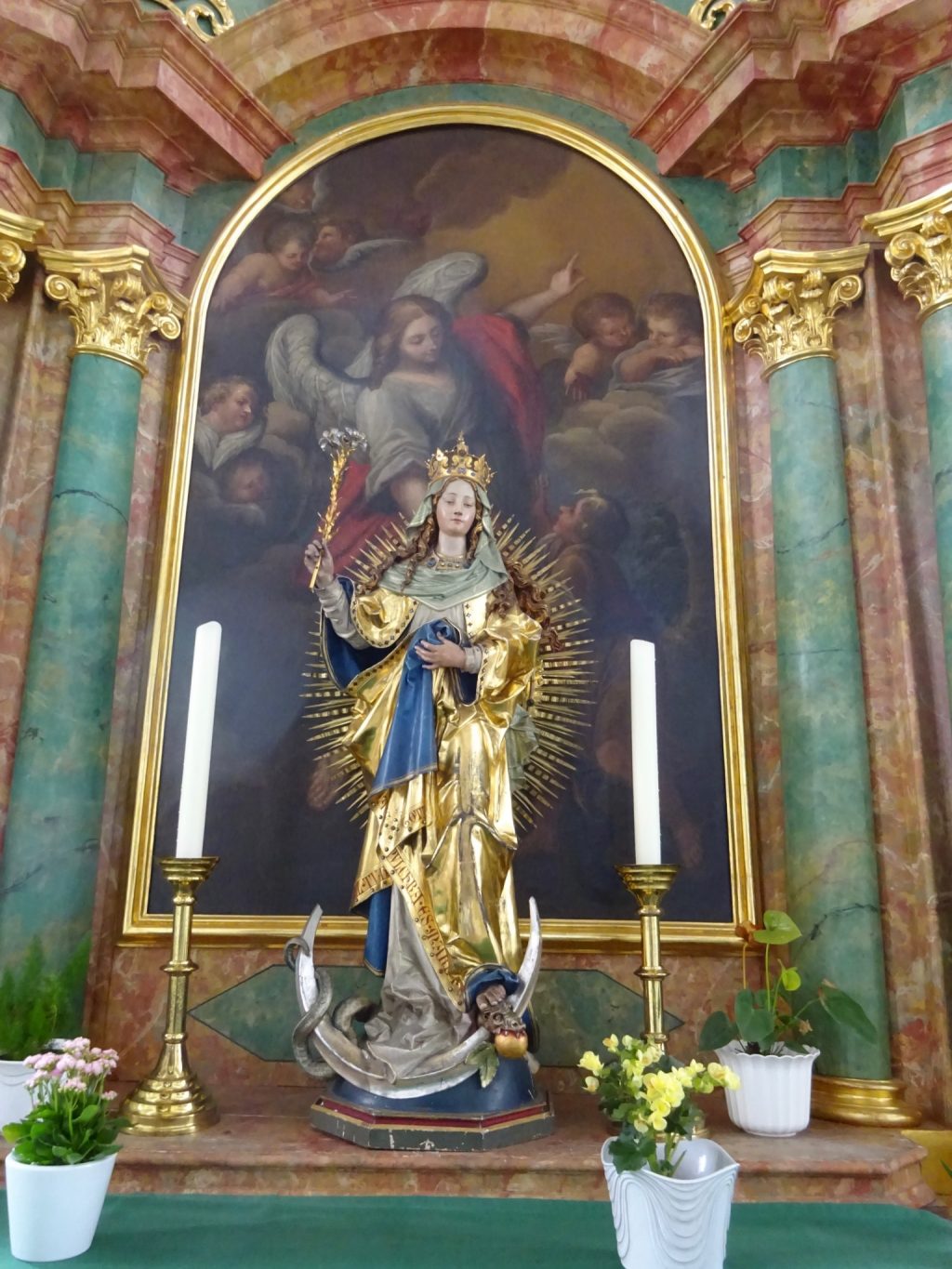
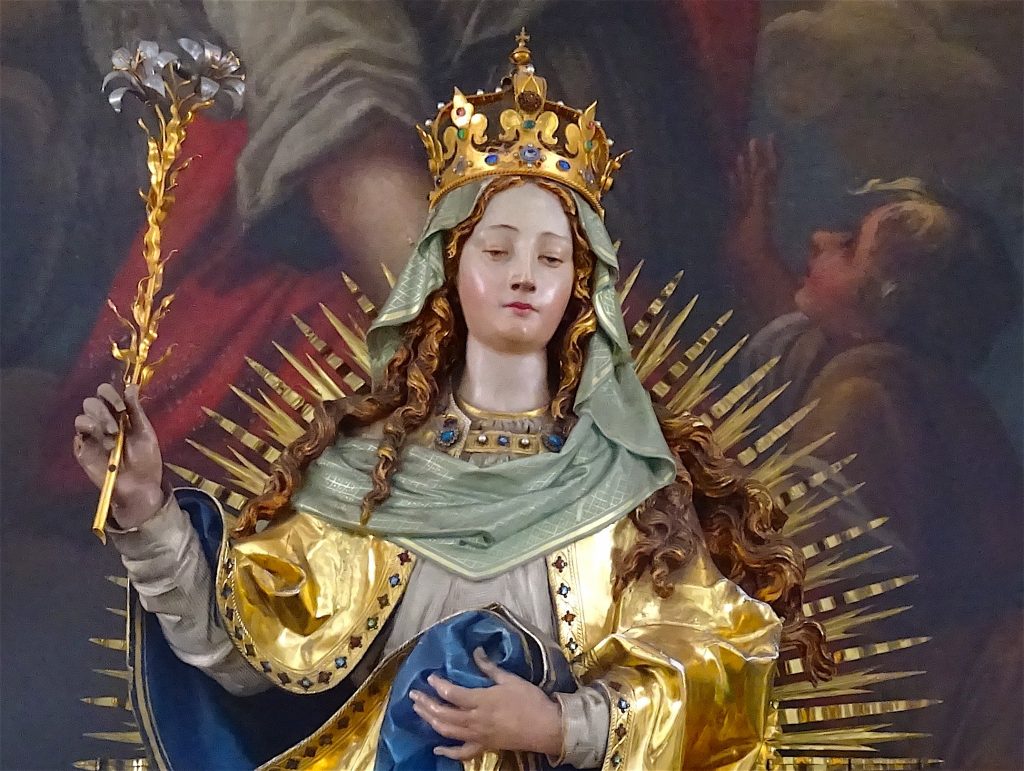
Hans Holbein the Younger “Madonna des Bürgermeisters Jacob Meyer zum Hasen” from 1526, detail

up-date 2018/7/21
Trevor Responds to Criticism from the French Ambassador – Between The Scenes | The Daily Show
up-date 2018/8/18

Die Tageszeitung, 2018/8/18
„Kein unschuldiges Wort“
Im Bundestag befasst sich Karen Taylor mit Menschenrechten. Ein Gespräch über Kolonialismus, geschützte Räume und die Macht von Quoten.
quotes:
Neben Ihrer Arbeit als Referentin der SPD im Bundestag sind Sie auch politische Referentin des Vereins Each One Teach One e. V., eines Community-Projekts in Berlin-Wedding von Schwarzen Menschen für Schwarze Menschen. Wie ist dieser Verein entstanden?
Unser Verein ist durch das Engagement Schwarzer, vor allem literaturbegeisterter Frauen entstanden, die uns ihr Archiv an afrodiasporischer Literatur vermacht haben. Neben unserer Bibliothek mit knapp 7.000 Werken gibt es zwar auch Formate, die sich generell an den Kiez richten, aber vor allem machen wir Projekte, die ausschließlich für Schwarze Menschen sind. Dazu zählen etwa Nachhilfe, Jugendsupport und eine Beratungsstelle für Erfahrungen mit Anti-Schwarzen-Rassismus. Wir haben den Bedarf gesehen, weil es zwar einige Angebote für Menschen mit sogenanntem „Migrationshintergrund“ gibt, aber kaum etwas, das sich explizit an Schwarze Menschen richtet.
Gerät der Verein auch in Kritik für diese explizite Ansprache Schwarzer Menschen?
Ja, leider werden wir regelmäßig dafür angegriffen, mit Hassnachrichten und vielen Anrufen. Es gab einen größeren Backlash, als wir ein eigenes Screening des Films „Black Panther“ als Schwarzes Event für die Community angekündigt haben. Viele Leute meinten daraufhin: „Wie könnt ihr mir verbieten, dorthin zu kommen, nur weil ich nicht Schwarz bin? Das ist rassistisch!“
Wie gehen Sie mit diesen Vorwürfen um?
Mit Gesprächen. Zum Beispiel erklären wir, dass es sich bei „Schwarz“ um eine Selbstbezeichnung handelt. Wir würden also niemals an der Tür stehen und sagen: „Du kommst nicht rein, du bist nicht Schwarz genug!“ Darum geht es nicht. Wir wollen nicht Menschen ausgrenzen, sondern einen geschützten Raum für Schwarze Menschen schaffen, den es bisher so nicht gegeben hat. Bei Frauengruppentreffen wird auch akzeptiert, dass Männer da nichts zu suchen haben. Und zwar nicht, weil diese Frauen Männerhasser sind, sondern weil sie einen geschützten Raum brauchen, wo sie ihre Erfahrungen mit Gewalt und Diskriminierung verarbeiten und gemeinsame Visionen für die Zukunft entwickeln können. Und genauso etwas braucht die Schwarze Community eben auch.
link to the article:
http://www.taz.de/Sozialdemokratin-ueber-den-Heimatbegriff/!5525323/

John Akomfrah: ‘Progress can cause profound suffering’
Sean O’Hagan, The Guardian, 2017/10/1
For the British artist, global warming, the subject of his ambitious new video installation, is a process rooted in technology and exploitation
John Akomfrah: ‘One of the complex questions I am asking is about the relationship between our locality and the bigger issue of how we belong on the planet.’
https://www.theguardian.com/artanddesign/2017/oct/01/john-akomfrah-purple-climate-change
John Akomfrah “Signs of Empire” @ New Museum, New York 2018/6/20 – 9/2
The New Museum presents the first American survey exhibition of the work of British artist, film director, and writer John Akomfrah (b. 1957, Accra, Ghana).
https://www.newmuseum.org/exhibitions/view/john-akomfrah-signs-of-empire
John Akomfrah in Conversation with Gary Carrion-Murayari
Since the early 1980s, Akomfrah’s moving image works have offered some of the most rigorous and expansive reflections on the culture of the black diaspora, both in the UK and around the world. Akomfrah’s work initially came to prominence in the early 1980s as part of Black Audio Film Collective, a group of seven artists founded in 1982 in response to the 1981 Brixton riots. The collective produced a number of films notable for their mix of archival and found footage, interviews and realist depictions of contemporary England, and layered sound collages. In works like Handsworth Songs (1986), Akomfrah and Black Audio outlined the political and economic forces leading to social unrest throughout England. Akomfrah and Black Audio’s works were remarkable for their trenchant political inquiries and consistently experimental approach. Throughout the 1990s, Akomfrah’s subject matter expanded beyond the social fractures of contemporary British society to focus on a wider historical context, from the persistent legacy of colonialism to the roots of the contemporary in classical literature. Moving into the early 2000s, Akomfrah also produced a series of atmospheric works addressing personal and historical memory. In the past several years, his multichannel video works have evolved into ambitious, large-scale installations shown in museums around the world.
2018/8/19 up-date:
Entwicklungshilfe ist ein Auslaufmodell
Ausländische Hilfsgelder versickern gerade in Afrika oft im Sand. Sie können sogar schaden, die Korruption anheizen, die wirtschaftliche Entwicklung hemmen und diktatorische Regime zementieren.
Neue Zürcher Zeitung 18.8.2018
David Signer, Dakar
Es ist schwierig, politisch korrekt über Afrika zu sprechen. Berichtet man über das verbreitete Elend auf dem Kontinent, heisst es, Afrika bestehe doch nicht nur aus Kriegen und Katastrophen, man solle auch einmal über Fortschritte, Modernisierung, Wirtschaftswachstum und den – angeblich – boomenden Mittelstand berichten. Diese beschönigende, verharmlosende Kritik ist seltsamerweise oft von links und aus Kreisen der Entwicklungszusammenarbeit zu hören. Vielleicht soll damit dem Vorwurf, die Hilfe habe nichts gebracht, vorgebeugt werden.
Es heisst auch, man solle nicht pauschalisierend über Afrika reden, am besten vermeide man das Wort «Afrika» ganz. Aber der Mehrheit der Bevölkerung in den meisten Ländern geht es schlecht, der Kontinent bildet ökonomisch immer noch weit abgeschlagen das globale Schlusslicht, und nur schon aus diesem Grund kann man weltwirtschaftlich sehr wohl von Afrika sprechen. Es ist zynisch, so zu tun, als sei die schmale Mittel- und Oberschicht repräsentativ für ein angeblich neues Afrika. Wenn alles so prima wäre, warum möchten dann laut einer kürzlich veröffentlichten Erhebung drei Viertel der jungen Erwachsenen Senegal verlassen, eines der demokratischsten und stabilsten Länder des Kontinents?
Hilfsgelder als Droge
Geht man von den desolaten Zuständen in den meisten afrikanischen Ländern aus, stellt sich die Frage nach den Ursachen. Verteidiger der Entwicklungszusammenarbeit suggerieren oft, es liege am Westen (hier gibt es weniger Skrupel zu verallgemeinern als beim Wort «Afrika»). Das beginnt beim Sklavenhandel, geht über den Kolonialismus und endet bei den angeblich vom Westen errichteten Handelsbarrieren, die Afrika in Abhängigkeit halten und seinen Aufschwung verhindern würden. Das Argument wird seit Jahren gebetsmühlenartig wiederholt, obwohl inzwischen die meisten afrikanischen Staaten, weil sie zu den am wenigsten entwickelten Ländern der Welt zählen, fast alles zoll- und kontingentfrei in die EU exportieren können.
…
Auch der generelle Hinweis auf den (Neo-)Kolonialismus, mit dem an das schlechte Gewissen der Spender appelliert wird, bringt wenig. Das Hauptproblem vieler afrikanischer Länder ist die junge Staatlichkeit. Manche befinden sich immer noch in der Phase des Nation-Building oder sind überhaupt Pseudostaaten, wie Kongo-Kinshasa. Natürlich kann man den Kolonialmächten vorwerfen, dass sie wenig dazu beigetragen haben, tragfähige politische Strukturen zu errichten und frühzeitig Kader auszubilden. Aber ohne Kolonialismus sähe die Situation wahrscheinlich in dieser Hinsicht nicht viel anders aus; möglicherweise wären die Staaten noch weniger ausdifferenziert und fragiler. Im Bereich der vorkolonialen Staatlichkeit unterscheidet sich Afrika radikal von Asien, und das erklärt vielleicht auch, warum sich ein Land wie Vietnam, das gleich mehrmals unter Kolonialismus und Krieg leiden musste, rascher stabilisieren und entwickeln konnte.
continue via:
https://www.nzz.ch/international/auslaufmodell-entwicklungszusammenarbeit-ld.1412317
ーーーーー
2018/9/17 up-date:
From the Archives: Mickalene Thomas on Why Her Work Goes ‘Beyond a Black Esthetic,’ in 2011
BY The Editors of ARTnews POSTED 09/14/18 11:14 AM
“These elements are not necessarily about the black experience; it’s about the idea of covering up, of dress up and make up—of amplifying how we see ourselves. It’s beyond a black esthetic.”
http://www.artnews.com/2018/09/14/archives-mickalene-thomas-work-goes-beyond-black-esthetic-2011/
Quintessentially Chinese art gives way to a global identity
Contrasting Zhang Xiaogang with a young ‘post-passport’ generation
Barbara Pollack
14th September 2018 15:14 GMT
Viewing their artworks, I learned to stop looking for a “Chinese identity” and instead developed the notion of what I like to call a “post-passport identity”.
https://www.theartnewspaper.com/comment/from-chinese-ness-to-a-global-identity
2018/9/21 up-date:
Visualizing the Numbers: See Infographics Tracing the Representation of African American Artists in Museums and the Market
See visualizations of our findings.
Julia Halperin & Charlotte Burns, September 20, 2018
https://news.artnet.com/market/visualizing-numbers-infographics-1351190
African American Artists Are More Visible Than Ever. So Why Are Museums Giving Them Short Shrift?
Our research finds that less than three percent of museum acquisitions over the past decade have been of work by African American artists.
Julia Halperin & Charlotte Burns, September 20, 2018
https://news.artnet.com/market/african-american-research-museums-1350362
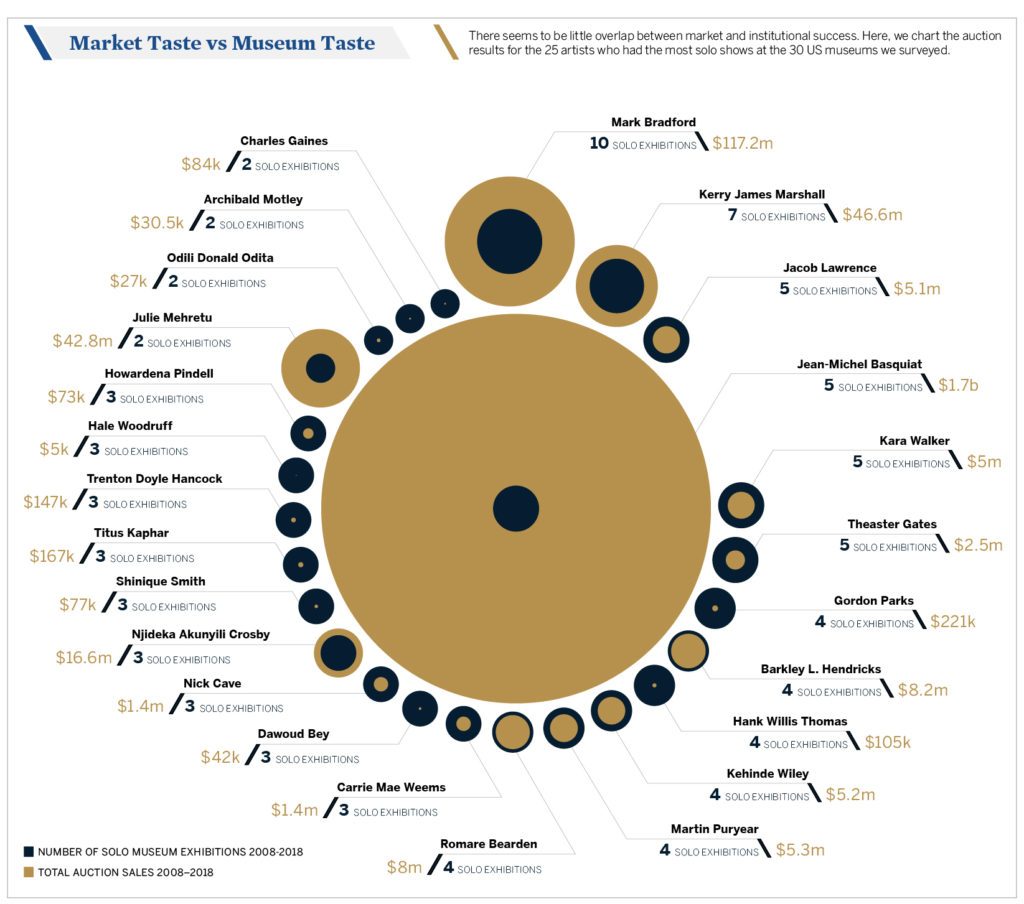


Soul of a Nation: Art in the Age of Black Power
September 14, 2018–February 3, 2019
Brooklyn Museum, New York
https://www.brooklynmuseum.org/exhibitions/soul_of_a_nation
BROOKLYN, NY.- The Brooklyn Museum presents the critically acclaimed exhibition Soul of a Nation: Art in the Age of Black Power, an unprecedented look at a broad spectrum of work by African American artists from 1963 to 1983, one of the most politically, socially, and aesthetically revolutionary periods in American history. Soul of a Nation considers the varied ways that Black artists responded to the demands of an urgent moment and brings together for the first time the disparate and innovative practices of more than sixty artists from across the country, offering an unparalleled opportunity to see their significant works side by side. The Brooklyn Museum is the only East Coast venue for this exhibition, which was organized by Tate Modern in London and traveled to Crystal Bridges Museum of American Art in Bentonville, Arkansas, in early 2018. The Brooklyn presentation will remain on view through February 3, 2019.
Soul of a Nation features more than 150 works of art in a sweeping aesthetic range, from figurative and abstract painting to assemblage, sculpture, photography, and performance. Among the influential artists of the time highlighted in the exhibition are Emma Amos, Frank Bowling, Sam Gilliam, Barkley Hendricks, Betye Saar, Alma Thomas, Jack Whitten, and William T. Williams. The Brooklyn presentation will also include several works by artist and scholar David Driskell, Suzanne Jackson’s Triplical Communications (1969), and a large-scale draped painting by Sam Gilliam titled Carousel Merge (1971). In addition, a monochromatic work by Emma Amos will be on view, as well as two large-scale paintings by British Guyana-born artist Frank Bowling and an abstract push-broom painting by Ed Clark from the late 1970s, which recently joined the Museum’s permanent collection.
The show begins in 1963, before the emergence of the Black Power Movement later in the decade, with the Spiral collective. This group of New York-based painters, including Romare Bearden, Norman Lewis, and Emma Amos, worked in diverse aesthetic styles and explored the role of Black artists in the struggle for civil rights. Also active in New York at the time was the Kamoinge Workshop, a group of photographers who responded to the lack of institutional support and mainstream representation of Black artists by conducting workshops and producing their own gallery shows and portfolios.
The exhibition goes on to trace how artists across the country continued to work in collectives, communities, and individually during the rise of the Black Power Movement. In Los Angeles, years of urban unrest propelled a number of artists to experiment with assemblage and sculpture. Artists such as John Outterbridge and Noah Purifoy made works inspired by the aftermath of the Watts Rebellion of 1965. Emory Douglas, who served as the minister of culture for the Black Panther Party, founded in Oakland, California, in 1966, created striking graphics and illustrations that became powerful symbols of the movement — 24 of which are included in the exhibition. In Chicago, a group of artists formed AfriCOBRA, whose manifesto and aesthetic philosophy aimed to empower Black communities. Works by its founding members are on display, including Gerald Williams’s Say It Loud (1969), whose vibrant colors, graphic lettering, and use of black figures were emblematic of the AfriCOBRA style. In New York, painters incorporated symbols of protest, solidarity, and Black pride, while many organized for institutional inclusion. Also featured is artist and professor David Driskell, who drew upon similar themes in his painting, as he worked to organize university art departments across the South and promote scholarship of African American art.
The show also addresses formal concerns and aesthetic innovations across abstraction and figuration in painting and sculpture, featuring such works as Sam Gilliam’s April 4 (1969), Barkley Hendricks’s Blood (Donald Formey) (1975), Frank Bowling’s Texas Louise (1971), and Martin Puryear’s Self (1978). With its central triangular form, Jack Whitten’s powerful Homage to Malcolm (1970) recalls the pyramids that Malcolm X visited on a trip to Africa in 1964, and was painted as a memorial to the late activist. Other works show the emergence of integral figures in Black feminism such as Kay Brown, Faith Ringgold, and Betye Saar, highlighting an important moment of visibility for female artists. The exhibition concludes with a section on Just Above Midtown (JAM), the first commercial gallery space dedicated to showing the work of avant-garde Black artists, notably including artists working in performance, such as Lorraine O’Grady, David Hammons, Senga Nengudi, and others.
The timely exhibition extends the Brooklyn Museum’s trailblazing commitment to a vital period in American art, following its exhibitions Witness: Art and Civil Rights in the Sixties (2014) and We Wanted a Revolution: Black Radical Women, 1965-85 (2017), as well as the Museum’s major acquisition of 44 works from the Black Arts Movement in 2013.
“With Soul of a Nation, we are honored to highlight the truly exceptional work produced by African American artists during one of the most significant moments in U.S. history and to honor these artists and all those arts professionals, here in Brooklyn and beyond, who have long supported their work,” said Anne Pasternak, Shelby White and Leon Levy Director of the Brooklyn Museum.
Ashley James, Assistant Curator of Contemporary Art, adds: “Artists in this exhibition bravely and variously created art responsive to an urgent time of social, political, and aesthetic rupture, resulting in some of the most striking works created in the late twentieth century. This exhibition adds to an already existing and growing focus on the art produced during the Black Power Movement, an indication of the period’s important and continued resonance with our present as well as the absolute excellence that defines the art of the era.”
Soul of a Nation: Art in the Age of Black Power shines light on a broad spectrum of Black artistic practice from 1963 to 1983, one of the most politically, socially, and aesthetically revolutionary periods in American history. Black artists across the country worked in communities, in collectives, and individually to create a range of art responsive to the moment—including figurative and abstract painting, prints, and photography; assemblage and sculpture; and performance.
Many of the over 150 artworks in the exhibition directly address the unjust social conditions facing Black Americans, such as Faith Ringgold’s painting featuring a “bleeding” flag and Emory Douglas’s graphic images of beleaguered Black city life. Additional works present oblique references to racial violence, such as Jack Whitten’s abstract tribute to Malcolm X, made in response to the activist’s assassination, or Melvin Edwards’s contorted metal sculptures. Working as a collective, members of the AfriCOBRA group presented images of uplift and empowerment. Barkley Hendricks, Emma Amos, and others painted everyday portraits of Black people with reverence and wit. All the artists embraced a spirit of aesthetic innovation, but some took this as their primary goal, often through experiments with color and paint application.
This exhibition brings together for the first time the excitingly disparate practices of more than sixty Black artists from this important moment, offering an unparalleled opportunity to see their extraordinary works side by side.
Soul of a Nation: Art in the Age of Black Power is organized by Tate Modern in collaboration with the Brooklyn Museum and Crystal Bridges Museum of American Art, Bentonville, Arkansas, and The Broad, Los Angeles, and curated by Mark Godfrey, Senior Curator, International Art, and Zoe Whitley, Curator, International Art, Tate Modern. The Brooklyn Museum presentation is curated by Ashley James, Assistant Curator, Contemporary Art, Brooklyn Museum.
Leadership support for this exhibition is provided by the Ford Foundation, the Terra Foundation for American Art, Universal Music Group, and the Henry Luce Foundation. Additional support is provided by the Brooklyn Museum’s Contemporary Art Committee, the Arnold Lehman Exhibition Fund, Christie’s, Raymond Learsy, Saundra Williams-Cornwell and W. Don Cornwell, Crystal McCrary and Raymond J. McGuire, Megan and Hunter Gray, the Hayden Family Foundation, Carol Sutton Lewis and William Lewis, Valerie Gerrard Browne, Hales Gallery, Tracey and Phillip Riese, Connie Rogers Tilton, and Jack Shainman Gallery.
——
2018/10/2 up-date

…
Centered on the theme of light and the color red, the collection of contemporary art and design will be auctioned by Sotheby’s during Art Basel in Miami Beach and Design Miami/ on the evening of 5 December 2018 – including global bidding that will be available live online and by phone. The auction will be preceded by a public exhibition presented by Gagosian at the famed Moore Building, which will open on World AIDS Day (1 December).
Artists donating works to the auction include Jeff Koons, Ai Weiwei, Wangechi Mutu, Sir Jony Ive and Marc Newson (who curated the second (RED) Auction), Christo, Sean Scully, Marilyn Minter, Frank Gehry, Guillermo Kuitca and Teresita Fernández, among others. In addition, Sir David Adjaye and Theaster Gates will create unique pieces for the sale.
…
https://www.sothebys.com/en/articles/the-third-red-auction-is-coming-to-miami-this-december
—–

Hiro Murai, left, with Donald Glover on the set of “Atlanta”
Hiro Murai on the ‘Atlanta’ Finale and ‘This Is America’ Video
The New York Times, By Joe Coscarelli, May 10, 2018
Season 1 of “Atlanta,” the unpredictable FX show created by Donald Glover, had a black Justin Bieber, an episode-long debate about transgender (and transracial) rights, an invisible car and, in spurts, a plot about an aspiring rapper and his rookie manager-slash-cousin.
Season 2, dubbed “Robbin’ Season,” which had its finale on Thursday night, upped the insanity: a homicidal Michael Jackson stand-inanchored one of two mini-horror movies; the real Michael Vick raced people for money; and a real alligator made a cameo, too.
One main ingredient both seasons had in common? The visual touch of Hiro Murai.
continue at…
https://www.nytimes.com/2018/05/10/arts/hiro-murai-atlanta-finale-this-is-america-interview.html
Childish Gambino – This Is America (Official Video)
up-date:
イマジネーション、美、芸術で地域に活力を吹き込む (2015/10/19)
陶芸師シアスター・ゲイツはシカゴのサウスサイドの忌むべき状況を変えたいと社会活動家となりました。 廃屋を生まれ変わらせコミュニティハブを作り、そこに住む人々を繋げ、インスピレーションを生み、そして新たな居住者も惹き寄せるのです。 この真摯なトークで、ゲイツは彼の「小さなヴェルサイユ宮殿」をシカゴに作るという情熱を説明し、文化がどんな場所でもどんな市でも生まれ変わらせる為のカタリストと成り得るという彼の熱い信念を語ります。 ( 翻訳 Eriko Tsukamoto 、レビュー Mari Arimitsu )
2019 年7月吉日
アーティストが考える「都市」とは?
《都市のヴィジョン − Obayashi Foundation Research Program (大林財団の助成事業)》 第2回 助成対象者
シアスター・ゲイツ/THEASTER GATES(アーティスト)
quote:
現代美術の分野で大きな影響力を持ち、国際的に活躍する
シアスター・ゲイツ氏は、貧困や暴力犯罪が深刻化してい る自身の生まれ故郷アメリカ合衆国・シカゴのサウスサイ ド地区で、2006 年からふたつの建物を図書館やキッチン、 パフォーマンス・スペースとしてリノベーションし、地域 の人々が集まる空間を創出。「ドーチェスター・プロジェ クト」として拠点を増やながら社会的課題に取り組み、展 覧会など様々な形で活動を継続し、地域産業に貢献してい ます。 シアスター・ゲイツ氏は、今回の助成を受け、調査・研究 のため、この夏日本を訪れる予定です。内容詳細について は決定しだいご案内申し上げます。
full text at:
https://www.obayashifoundation.org/news/file/TG_PressRelease_JN_20190711_01.pdf
up-date 2022/2/11
What Is Black Love Today?
In a special collaboration between Modern Love and Black History, Continued.
We gathered stories that illuminate how Black people live, and love, in this moment.
Feb. 11, 2022, New York Times
When we invited readers — as well as renowned writers such as Staceyann Chin, Mahogany Browne and Damon Young — to respond to the question “What is Black love today?” we were moved by the strength, resilience and diversity of the stories they told us.
To love, or be loved, while Black in the United States has always been tied to community, country and all the ways in which racism can infiltrate a love life: an unwanted third party to any Black love affair, one that refuses to move out no matter how often or how hard you try to evict it. Race, and the inheritance of racial bias, was a thread through nearly every story we read.
In large cities across the country, 81 percent of Black communities are more segregated than they were 30 years ago. As recently as 2017, 82 percent of new Black marriages were between two Black partners. Yet we weren’t looking solely for stories of intraracial romance and the submissions we received remind us that Black love is far from a monolithic concept. These essays tell of heterosexual partnerships, queer love, open relationships, missed connections and the kind of loving familial bonds that often prove to be among the most complex love stories of all.
It’s been 18 years since the Modern Love column debuted — and in all its iterations, it continues to beguile us. Perhaps that’s because, as the poet Nikki Giovanni once wrote, “We love because it’s the only true adventure.” Every Black love story — like every love story — is a journey into uncharted territory, making us explorers and lovers at the same time.
full text:
https://www.nytimes.com/2022/02/11/style/what-is-black-love-today.html
up-date 2022/8
Convincing artistic statements by Kehinde Wiley.
ここに載せた写真は、すべて「好意によりクリエーティブ・コモン・センス」の文脈で、日本美術史の記録の為に発表致します。
photos: cccs courtesy creative common sense

